
2017 VOLUME 28





866.554.2924 • Kiawah Islan d.com MAIN GATE: 1 Kiawah Island Parkway | SANCTUARY: off main lobby, near Jasmine Porch FRESHFIELDS VILLAGE: 390 Freshfields Drive | HISTORIC CHARLESTON: 12 Queen Street THESE FOUR DOORS ARE YOUR GATEWAY TO THE KIAWAH ISLAND LIFESTYLE. KIAWAH’S MAIN GATE SANCTUARY HOTEL FRESHFIELDS VILLAGE HISTORIC CHARLESTON Kiawah Island Real Estate is the trusted resource for people seeking the Kiawah lifestyle. More than 10,000 Kiawah Island buyers and sellers have walked t hrough these doors because they know that our 30 real estate sales and marketing professionals represent the best of what Kiawah Island has to offer. Obtain the Property Report required by Federal law and read it before signing anything. No Federal agency has judged the merits or value, if any, of this property. Void where prohibited by law. An offering statement has been filed with the Department of State of the State of New York. A copy of the offering statement is available, upon request, from the subdivider. The filing of the verified statement and offering statement with the Department of State of the State of New York does not constitute approval of the sale or lease or offer for sale or lease by the Department of State or any officer thereof, or that the Department of State has in any way passed upon the merits of such offering. This project is registered with the New Jersey Real Estate Commission. Registration does not constitute an endorsement of the merits or value of the project. Obtain and read the NJ Public Offering Statement and read it before signing anything. (NJ Reg #89/15-175) AN AFFILIATE OF KIAWAH PARTNERS


 Photo by: Newport653 Photography
Photo by: Newport653 Photography
Buffi ngtonHomes.com 843.768.8525
Photo by: Newport653 Photography
For generations We Build It As If It Were Our Own.
Photo by: Newport653 Photography



INTERIOR DESIGN ARCHITECTURE 843.937.6001 • theandersonstudio.com v v v
KIAWAH ISLAND CHARLESTON v v
ST. KITTS


AND THEN IT OCCURS TO YOU
is the Kiawah Island you’ve been looking for all along. And it’s yours to keep. West Beach, Kiawah Island | TimbersKiawah.com | 843.371.5177
This
This advertisement does not constitute an offer to sell nor the solicitation of an offer to purchase made in any jurisdiction nor made to residents of any jurisdiction, including New York, where registration is required and applicable registration requirements are not fully satisfied. Timbers Kiawah Acquisition Partner, LLC uses the Timbers Resort ®, Timbers Collection ® and certain other Timbers brand names under a limited non-transferrable license in connection with the sales and marketing of the Timbers Kiawah Ocean Club & Residences (the “Project”). If this license is terminated or expires without renewal, the Project will no longer be identified with nor have any right to use the Timbers ® marks and names. All renderings depicted in this advertisement are illustrative only and may be changed at any time. All rights reserved.

TIMBERS KIAWAH OCEAN CLUB & RESIDENCES













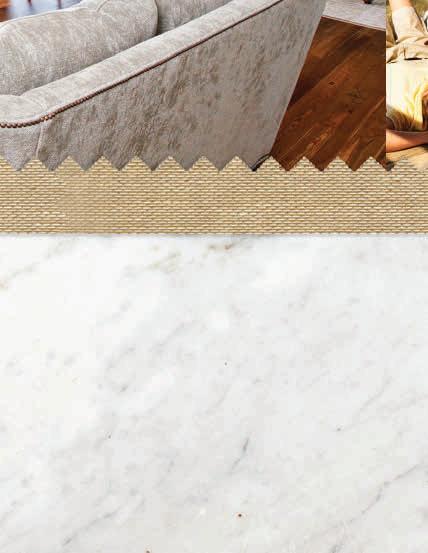





It’s Your Home.
NOW PROUDLY OFFERING PROPERTY MANAGEMENT SERVICES – CALL FOR DETAILS
Owner, Dolphin Architects & Builders







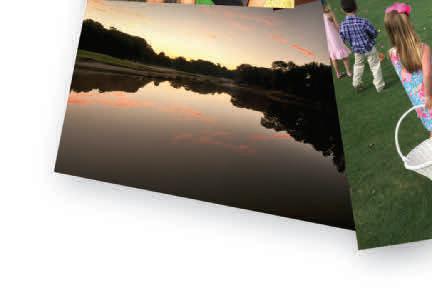


Make Epic Memories. PO Box 868 Johns Island, South Carolina 29457 843-224-7151 epicdevelopmentsc.com Custom homebuilding on Kiawah Island

INSURANCE steadmanagency.com | 8 Vanderhorst Street | Charleston, SC | 843.723.4001 OUR PASSION. YOUR PEACE OF MIND.
OWNER PROFILES
LIKE NOBODY’S WATCHING
46
THE GINKGO TREE | A LIVING FOSSIL
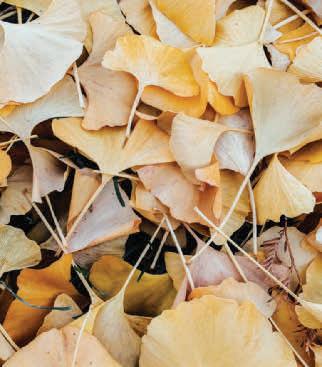
54
ARTIST PROFILE
76
RITE OF PASSAGE
86
KIAWAH FIELD GUIDE


10 LEGENDS MAGAZINE 2017 NO 28 28
JENN & KEVIN KING JEAN & STUART SERENBETZ
36
Writer Jonathan Sanchez weaves a sweet story of a young family summering on Kiawah.
Expert Peter Del Tredici offers a brief history of this ancient tree.
Visit the studio of painter Teil Henley, one of Charleston’s celebrated artists.
Look back at the fortieth anniversary of Spoleto Festival USA, from Porgy and Bess to Old Crow Medicine Show.
36 132
Becca Barnet illustrates the birds and beasts of Kiawah.
46
96 OF BIRDS AND BOGEYMEN
Golf writer Tom Coyne offers up his cheekiest insights on the etymology of the game.
104
THE CIVIL WAR | CHARLESTON AND THE SEA ISLANDS

Learn how this momentous war changed life in the Lowcountry forever.
114
DIARY OF A KIAWAH PIONEER | CHAPTER FOUR

Explore the characteristics of the maritime forest in the fourth installment of Blanche Brumley’s extraordinary diary.
132
LOWCOUNTRY PLANTATIONS
Take a tour of the past: the plantation houses, gardens, and history of the Lowcountry’s crown jewels.
144
TASTING ART
Writer Sandy Lang and photographer Peter Frank Edwards spend a colorful afternoon with celebrated chef Sean Brock.
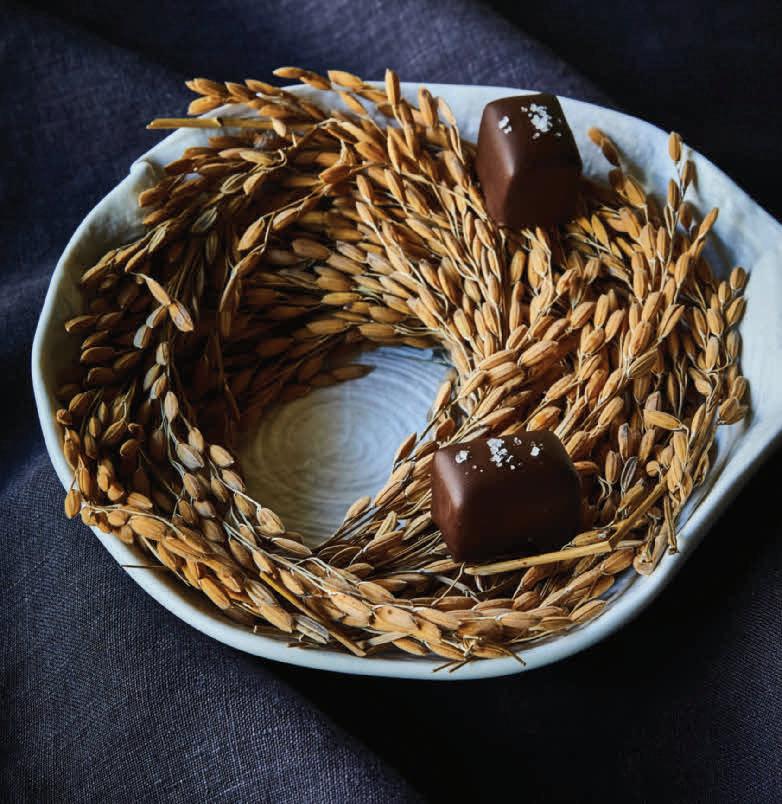
ON THE COVER: The Whitfield Family GOOD WORKS: GOOD FRIENDS OF THE LOWCOUNTRY | 152 ON & ABOUT KIAWAH | 165 EMPLOYEE PROFILE: IRA GLADDEN | 172 END NOTE | 175
104 76
144





KIAWAH ISLAND • CHARLESTON • DANIEL ISLAND established 2006 classic homes designed for modern living





843.709.2505 • WWW.NOVELLAHOMES.COM two time prism award winner
Holger Obenaus Photography
Holger Obenaus Photography
Holger Obenaus Photography
Patrick Brickman Photography




BIRMINGHAM n CHARLESTON n WWW.TAMMYCONNORID.COM

EXECUTIVE EDITOR
Hailey Wist
COPY EDITOR
Sunny Gray
PHOTO EDITOR
Nathan Durfee
MAGAZINE & EDITORIAL DESIGN
Amy Pastre and Courtney Rowson of SDCO Partners
TO SUBSCRIBE
kiawahlegends.com
SPECIAL THANKS
Rick Benthall
Melanie Birch
Peter Birch
Sean Brock
Blanche Brumley
Frank Brumley
Deborah Cardenas
Lucinda Detrich
Gina Ellis-Strother
Brenda Falls
Paige Feigley
Herb Frazier
Ira Gladden
Laine Hester
Bill Houghton
Scott Howell
Lenny Kohlmayer
Celeste Marceca
Rachel Moore
Kristine Morris
Katherine Peterson
CONTRIBUTORS
Becca Barnet
Christina Rae Butler
Tom Coyne
Peter Frank Edwards
Stephanie Hunt
Sandy Lang
Jonathan Sanchez
Melissa Toms
Peter Del Tredici
Charlotte Zacharkiw
Megan Phillips
Chris Randolph
Jennifer Scott
Jean Serenbetz
Stuart Serenbetz
Chuck Shaffer
Chris Shope
Kiawah Island Legends is a publication of Kiawah Island Publishing, Inc., an affiliate of Kiawah Island Real Estate. Copyright 2017.
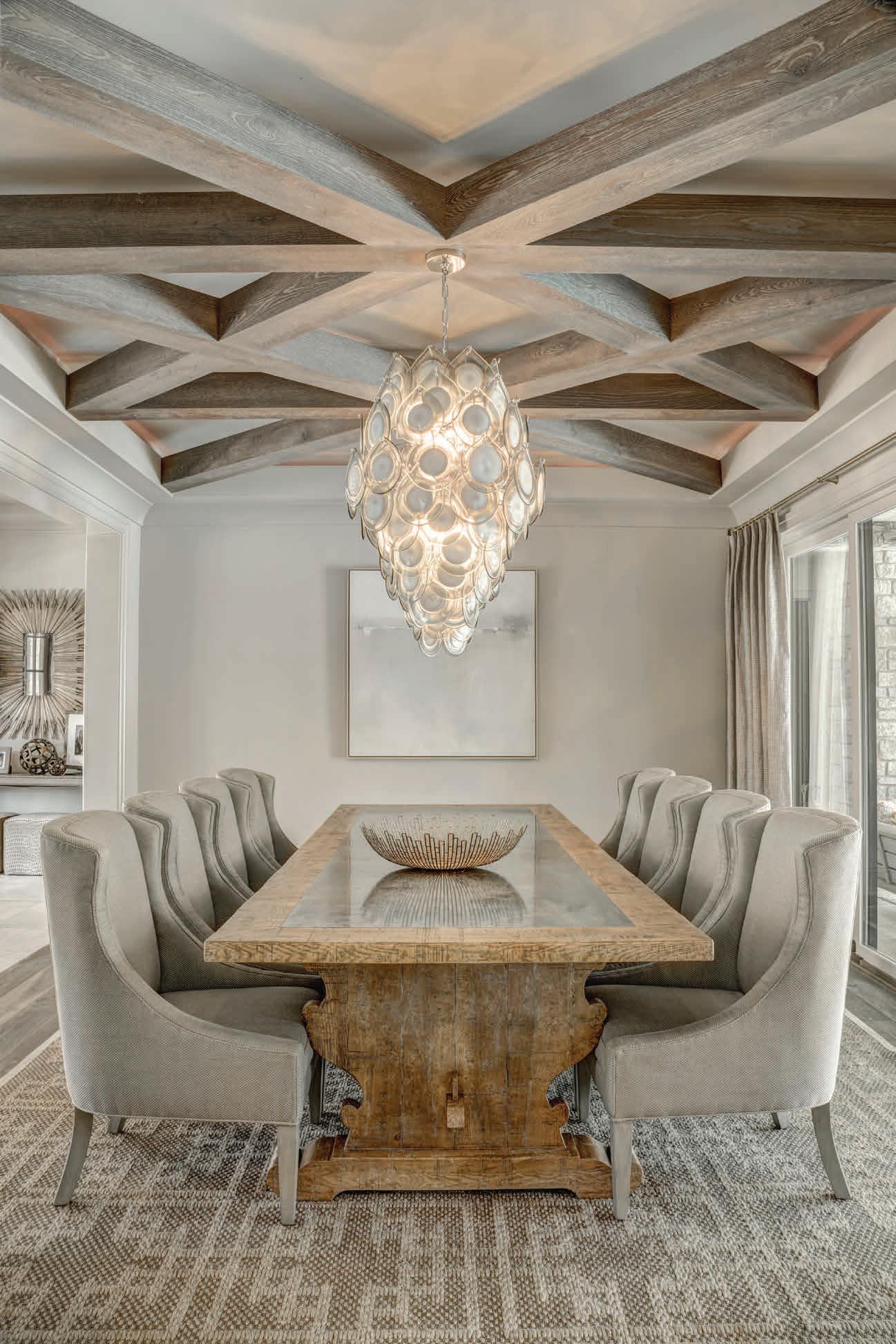
Bonnie Singletary
Mike Vegis
Leigh Webber
Lauren Whitefield
Michael Whitefield
All rights reserved in all countries. Contents may not be reproduced in any manner without the written permission of Kiawah Island Publishing, Inc.
Kiawah Island Publishing, Inc. does not necessarily agree with the viewpoints expressed by authors of articles or advertising copy.
kiawahlegends.com
16 LEGENDS MAGAZINE 2017 NO 28

CHARLESTON · CHARLOTTE World Class Living KINGS W OO D The Mark of Distinction in World Class Home Building Charleston (843) 801.1600 Charlotte (704) 889.1600 www.kingswoodhomes.com TM
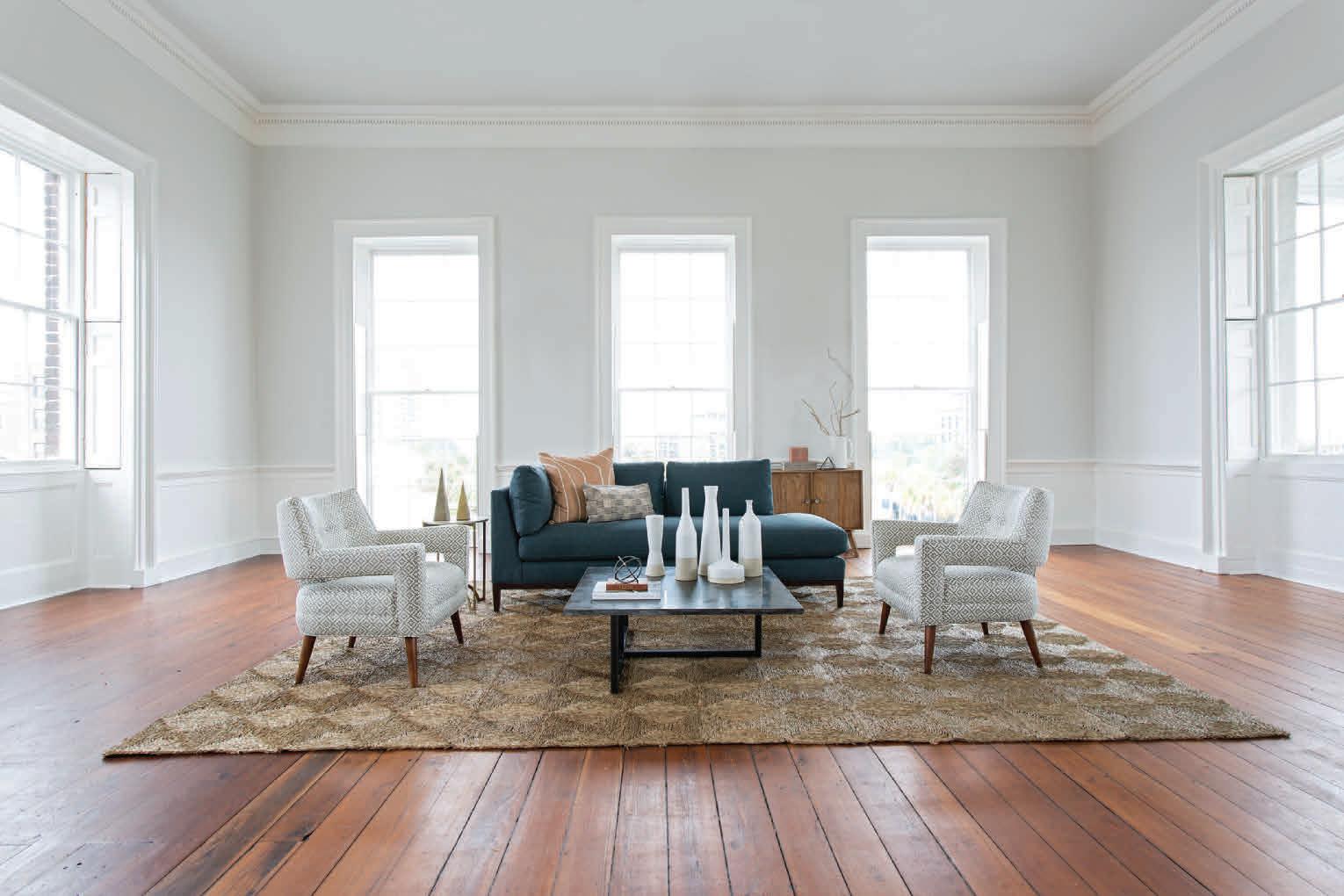
FURNITURE RUGS ACCESSORIES LIGHTING FABRICS BEDDING OUTDOOR FURNITURE DESIGN SERVICES
Contributors
OLIVIA RAE JAMES | PHOTOGRAPHER

Olivia Rae James is a wedding and editorial photographer living in Charleston, SC. She aims to capture the raw beauty of real moments. Recent weddings have taken her to the English countryside, Sonoma, Aspen, and Harbour Island. Editorial clients include Food & Wine, Garden & Gun, and Monocle, among others. The Whitfield family was so much fun to photograph. They were truly having a blast together, hanging out on Kiawah, which made my job super easy.
TOM COYNE | WRITER

Tom Coyne is the New York Times bestselling author of A Course Called Ireland, Paper Tiger, and the upcoming A Course Called the Kingdom His first book, A Gentleman’s Game, was adapted into a motion picture starring Gary Sinise. A professor of English at Saint Joseph’s University, he lives outside of Philadelphia with his wife and two daughters. I have always felt that golf’s curious vernacular befit its mysterious nature, and poking around at the meanings behind the idioms was like listening to an old caddy tell stories in the pub—a lot of fun.
SANDY LANG | WRITER

Writer Sandy Lang’s recent assignments include copywriting for a California winemaker and a Southern artist collective, and writing a magazine feature about a rock musician-turned-hops-farmer in Maine. Sandy also often collaborates with SDCO on online and print projects, and she posts online at tinysuitcase.com.
STEPHANIE HUNT | WRITER
A freelance writer and editor, Stephanie has a wide curiosity and deep crush on words. She writes for numerous publications including Charleston magazine, Coastal Living, the The Telegraph (London), and others. She lives in Mt. Pleasant’s Old Village with her husband, three girls, and a retired greyhound, and she rides bikes from there to hither and yon. Talk about a jackpot assignment! I’m one of those people who gets chills when the confetti flies over the Four Corners of Law at Spoleto’s opening ceremony. Porgy & Bess was such a treat.
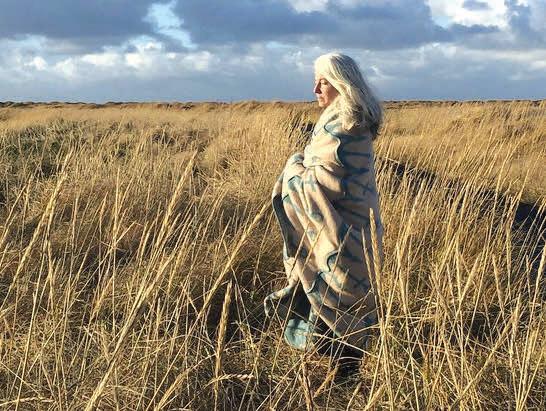
LEGENDS MAGAZINE 2017 NO 28 19
There’s always music (loud!) and laughing when I work with Sean Brock and Peter Frank Edwards. I had a blast musing about modern art and mulling over whether something can simply be “too delicious.”
Jonathan Sanchez is the founder of YALLFest, the world’s largest young adult book festival, and of the Write of Summer camp for kids, and he owns Blue Bicycle Books. He grew up in Charlotte and now lives in downtown Charleston with his wife, Lauren, an interior designer, and their two children, Evelyn and Alexander. Probably the part of this story that I identify the most with is the husband’s obsession with throwing things. Smartphones would be much more fun if they were designed to be thrown. The iNerf?
Christina Butler is an adjunct professor for the College of Charleston’s historic preservation department and teaches at the American College of the Building Arts. Christina is the owner of Butler Preservation L.C., specializing in historic property research, preservation, National Register nominations, and restoration projects. Christina lives in downtown Charleston with her husband, historian Nic Butler. The research for this article was a sobering reminder of how widespread the social, physical, and economic impact of the War was, for South Carolinians of all races and in rural and urban areas alike.

Peter Del Tredici recently retired from the Arnold Arboretum of Harvard University. He taught Landscape Architecture at Harvard from 1992 through 2016, and he is currently teaching in the Department of Urban Studies and Planning at MIT. Dr. Del Tredici has been a student of the ginkgo tree since 1988 and has authored more than 140 scientific and popular articles. This article summarizes my work with the tree over the past twenty-five years, covering all aspects of its evolution and ecology and its long relationship with people as a cultivated plant.
A frequent contributor to Legends, Peter Frank Edwards’s photography also appears in Garden & Gun, Bon Appétit, Coastal Living, and Travel

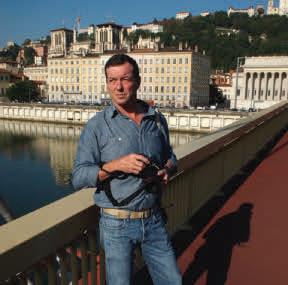
+ Leisure. When not on assignment, he enjoys cooking, tinkering with vintage audio, and being outdoors. A tour through the latest food that Sean Brock is cooking or growing or curing is always amazing—food in jars, hanging on hooks, in coolers. It was an honor to photograph the chef’s first cookbook, Heritage , and we’re working on a second book this year.
BECCA BARNET | ARTIST

Becca received a BFA in illustration from the Rhode Island School of Design and has worked at the American Museum of Natural History, the South Carolina Aquarium, and The Charleston Museum. Becca now runs Sisal Creative, specializing in model making, props, decor, and taxidermy, creating one-of-a-kind art installations for restaurants, offices, and museums. I loved drawing the animals in this detailed style, because each one has so many textures and patterns to play with!
 JONATHAN SANCHEZ | WRITER
CHRISTINA RAE BUTLER | PROFESSOR
PETER DEL TREDICI | PROFESSOR
PETER FRANK EDWARDS | PHOTOGRAPHER
JONATHAN SANCHEZ | WRITER
CHRISTINA RAE BUTLER | PROFESSOR
PETER DEL TREDICI | PROFESSOR
PETER FRANK EDWARDS | PHOTOGRAPHER
It was an honor to photograph the chef’s first cookbook, Heritage , and we’re working on a second book this year.
20 LEGENDS MAGAZINE 2017 NO 28
– PETER FRANK EDWARDS

HENDRICK LEXUS CHARLESTON 2424 Savannah Highway (843) 852-0100 EXPERIENCE AMAZING Options shown. *Ratings achieved using the required premium unleaded gasoline with an octane rating of 91 or higher. If premium fuel is not used, performance will decrease. ©2017 Lexus THE FIRST- EVER LC 500 AND LC 500 h This is not merely an automobile. It’s an experience. Part arresting, part exhilarating, all breathtaking. Introducing the aggressive LC 500. A high-performance coupe with near-perfect weight distribution, 471 horsepower* and a throaty engine note to match. Also available with all-new Multistage Hybrid technology, the LC 500h redefines the entire concept of hybrid performance. Experience Lexus like you’ve never experienced it before. Experience Amazing. Arriving May 2017. lexus.com | #Lexus

Celebrating 100 YEARS OF STYLE 294 KING STREET (AT THE CORNER OF KING AND SOCIETY) | 843-723-8603 | MDUMASANDSONS.COM | #DUMAS100


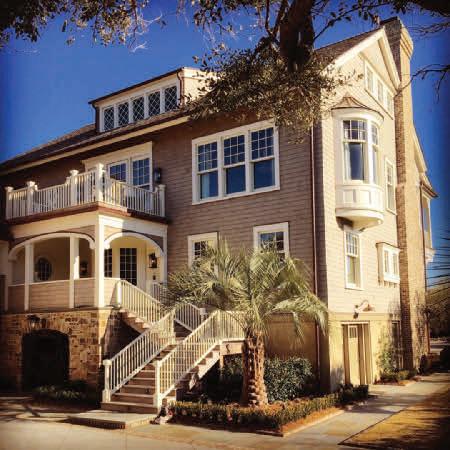

7 BROAD STREET, CHARLESTON TEL (843) 727-2555 ww w . KI A W AHDESIG N . com
Every year, this sweet Sea Island reveals another part of itself. Every year, we fall a little bit more in love.


Perhaps it is the mystery of the Island landscape, the unique contours of its spits and marshes, its tidal creeks and wild animals roaming free. Perhaps it is the history, the long, slow cultivation of something rich and deeply pleasant, family traditions, and heritage. Perhaps it is the people. The Kiawah community is engaged and involved, full of good neighbors and thoughtful citizens grounded by the essentiality of the Island. These parts of the whole are familiar and absolute, and there exists an intimate relationship with the people and the place.
In this twenty-eighth issue of Legends Magazine, I hope to catch hold of the something that so attracts us, the enigmatic element of Kiawah Island. I spoke to and worked with so many kind, generous, happy people in the making of this edition, and I am, again, honored to contribute to this extraordinary community.


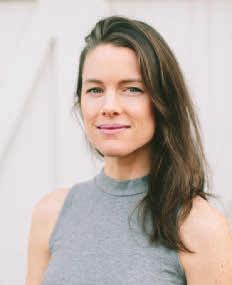
24 LEGENDS MAGAZINE 2017 NO 28
EDITOR’S LETTER
WIST
NATURE CONCEALS HER MYSTERY BY HER ESSENTIAL GRANDEUR. – ALBERT EINSTEIN HAILEY










ATLANTA . GEORGIA . 404 574 1430 . WWW.DSDIXONARCHITECT.COM ARCHITECT D.S TANLEY D IXO N EMILY FOLLOWILL




rmbuck.com CUSTOM LUXURY HOMES RENOVATION PROPERTY MANAGEMENT 843.559.1155 ATTENTION TO DETAIL... only a family builder can provide.
Photography: Holger M. E. Obenaus

NEW YORK, NEW YORK THE KING FAMILY Property Owners
Q Where are you from?
A Jenn: I’m from New York, born and raised. Kevin: I’m from Washington, D.C., and the boys were born in London.
Q What’s the story there?
A Jenn: Kevin was working in London when we got engaged and I moved over! So the boys have British passports.
Q And how old are you boys?
A Justin: Fifteen. I’m in ninth grade. Cal: Thirteen. Seventh grade.
Q How did you find Kiawah?
A Kevin: I’m an investment banker, and when I was working in New York we took a group of customers to the Kiawah Island Club. I went when I was twenty-five years old and thought, If I ever make more money, I have to come to this island! But then we went to London, and I didn’t [come back] for a long time.
Jenn: I had never heard of it, but we had friends from North Carolina who were buying a house for investment purposes, and they asked us if we wanted to buy with them. So we went in on the house sight unseen. We came down for the first time in 2004 and just fell in love with it. Kevin: Now the boys and Jenn spend most of their summer there.
Jenn: We also go for Easter and Thanksgiving.
Q What were your first impressions of the island?
A Kevin: Well, Jenn and I grew up going to the beaches of New York, New Jersey, and the Hamptons, and that’s what we knew these beach communities that are so overgrown.
Jenn: And you get to Kiawah and it’s just this expanse of land you feel like you have room to breathe when you get here! It’s just so peaceful, so laid back. At night there aren’t a thousand lights, no street lamps. You walk the dog at night and have to bring a flashlight.
Kevin: I always say that if you can run three miles in your normal life, you get down to Kiawah and you can run five. You’re so much more relaxed with yourself that you can do that much more.
Q And what about you, boys?
A Justin: I have a lot of friends down there, which is so
nice. There’s always stuff to do.
Cal: We can literally bike anywhere on the island.
Q What are your favorite things to do on the island?
A Justin: I would have to say it’s a tie between the Sports Pavilion and the Beach Club. There’s so much to do. We hang out by the pool and down on the beach. We bike to East Beach for breakfast.
Cal: I really love the Sports Pavilion. There’s a pool, and you can play tennis, basketball, squash, Ping-Pong, everything! There’s a workout gym. You can do so much there.
Jenn: And the staff there is so nice, and they’ve known the kids for so long.
Q How is it making friends each summer?
A Justin: The same families come down every summer and stay the same time that we do.
Cal: Probably one of the best parts of summer is hanging out with your friends every day.
Jenn: They met all their friends when they were really little Tiny Tots Tennis, golf lessons, Beach Club games they met when they were three, four, and five.
Kevin: They refer to them as the Kiawah Island friends, the Kiawah crew.
Cal: Of the friends that we hang out with a lot, one is from Denver, one is from Charleston, one from Connecticut. It’s nice to come to a sanctuary and hang out.
Q Do you invite friends and family down to visit?
A Jenn: Family mostly. Our parents come for Fourth of July. We have to be here for Fourth of July
Justin: Riverside Extravaganza! It’s one of our favorite days of summer. Everyone you know is there.
Jenn: Also, there are no video games at Kiawah, no Xbox, no Apple TV.
Q And do you guys miss it?
A Justin: Oh no, definitely not. We always have stuff to do.
Q It sounds like you’ve made some great friends?
A Kevin: We have. Jenn threw me a party at Cassique. It was definitely no question to do it at Kiawah.
Jenn: Everyone at the party was talking about how our kids have grown up together. We started coming when they were toddlers, and now some of them are getting their driver’s licenses!
LEGENDS MAGAZINE 2017 NO 28 29
From
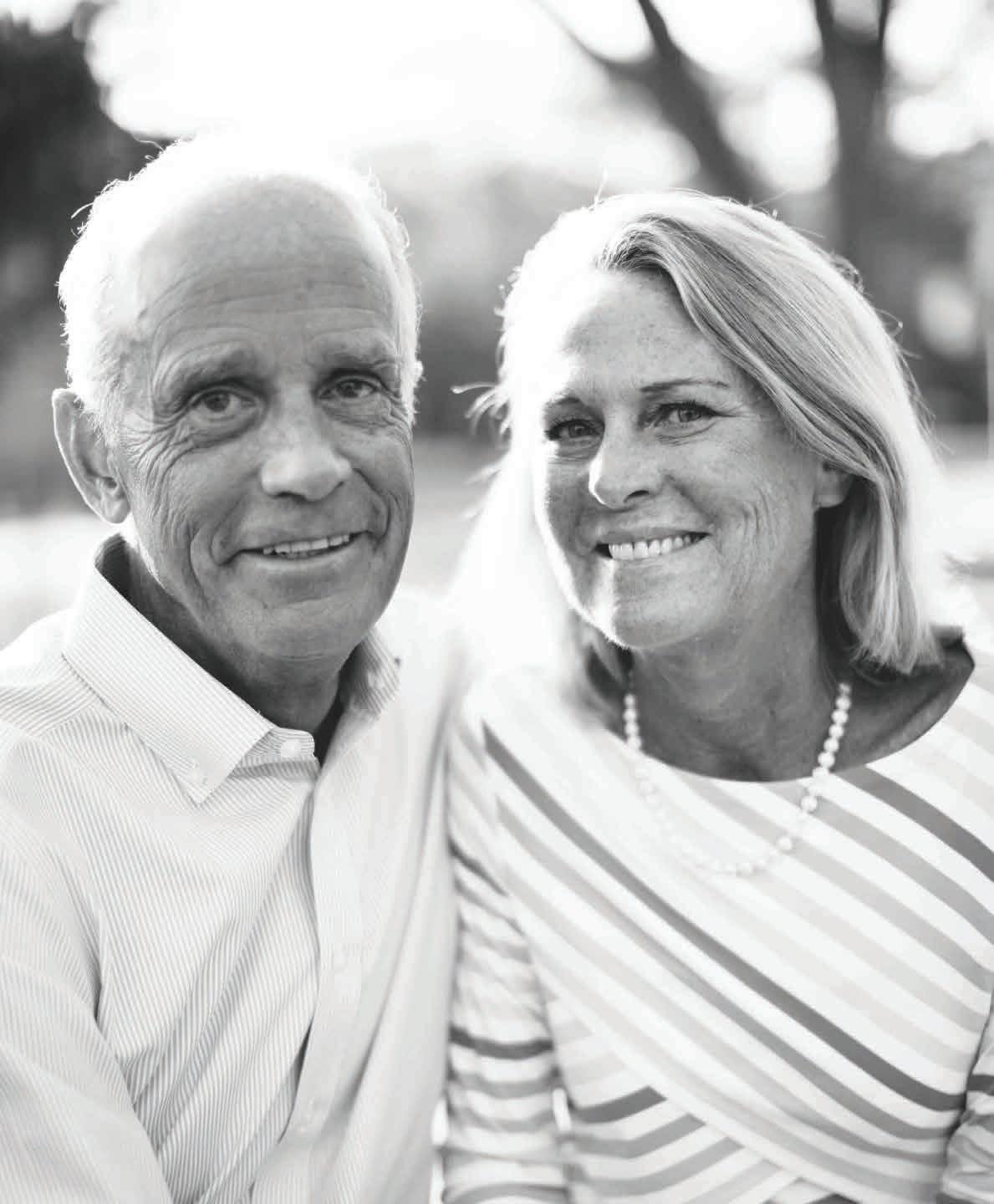 From STAMFORD, CONNECTICUT JEAN & STUART SERENBETZ Property Owners
From STAMFORD, CONNECTICUT JEAN & STUART SERENBETZ Property Owners
Q Where are you two from?
A Stuart: I’m from Larchmont, New York. Jean: I grew up in Ohio.
Q How did you meet?
A Jean: We were in business school together at Dartmouth, and we met the first day.
Stuart: Well, you meet everyone the first day. It was a very small class.
Q Did you start dating immediately?
A Jean: You answer that one!
Stuart: I’m not answering that.
Jean: When we got to Dartmouth, we both had significant others. Over the course of two years we became boyfriend and girlfriend. There you go. (laughs)
Q And the rest is history?
A Jean: We’ve been married thirty-four years. We’ve lived in Stamford, Connecticut for thirty years and raised all our kids in the same house.
Stuart: We have three children.
Q How did you find Kiawah?
A Jean: Stuart’s dad had a condo at Wild Dunes back in the ’80s, and we first came down to Charleston then. But about six years ago we started coming back to this area and looking in earnest for a place.
Q What were your first impressions of Kiawah?
A Jean: There’s just so much to do here. And the club is so well run and service oriented. When we were looking for a place, I told all the realtors we wanted a club that felt right before we even started looking at homes. We came down to visit several times. We thought, Oh boy, this is the kind of club we want to be a part of. We love being here during every season. We love the quiet times during the fall and winter, and we love that the beach is so active with families during the summer.
Stuart: We started looking about five years ago. We went all over the Southeast, both coasts of Florida, and down the East Coast. It’s hard to find anything comparable to these facilities. But then we have the ocean beach! And then you have Charleston! Who else has Charleston? You can’t find it anywhere else. It’s the whole package.
Q What are your favorite things to do?
A Stuart: Golf is probably number one.
Jean: Well it’s hard to decide. But I guess I spend most of my time playing golf at Cassique and The River Course.
Stuart: I spend a lot of time at the Sports Pavilion. I love it. I work out and I swim. It’s a beautiful pool.
Jean: The beach.
Stuart: Kayaking!
Jean: Today I went to a yoga class, and Stuart went to work out at the gym, and then we met at the beach and went for a two-hour beach walk. I love that everyone has chosen Kiawah because they’re active. We were playing golf yesterday with a couple, and we ran into friends on the course, and they invited us to have cocktails at the kayak dock. So we made a date while we were on the golf course. There were twelve neighbors there!
Q That’s community.
A Jean: That’s right. Cassique really is a neighborhood, and that’s what Stuart and I wanted.
Q Do you have friends out here?
A Jean: It’s like two degrees of separation at Kiawah! I’ve met a lot of women playing with the Pelicans golf group. And we’ve met so many people with whom we have mutual friends from different chapters of our lives.
Stuart: Another thing I like about Kiawah is that there are a lot of families. We looked at some places that made you feel like you were in a retirement spot, and you come here and there are kids and grandkids and families all over the place.
Q Will your kids visit a lot?
A Jean: We hope so. We had them all here in October for the first time. First we had lunch in Charleston and then came out here and took a sunset cocktail cruise on the club boat. So we had a beautiful night!
Q And they loved it?
A Stuart: Oh, yes. Jean: And we barely scratched the surface! We went kayaking, biking, golfing, beach walking, and we had brunch. Then they all had to leave.
Q How much time do you spend here?
A Jean: It’s a second home, not a vacation home. Stuart: The idea is to transition to a primary, permanent, full-time residence. With my family back up north, we’re still transitioning Jean: And we’re going to be where the weather is better at any given time! (laughs) This year our son was engaged on New Year’s Eve here at the beach, so we are hoping Kiawah becomes a special place for the next generation of our family as well!
LEGENDS MAGAZINE 2017 NO 28 31


www.christopherrosearchitects.com CHARLESTON, SC 843•559•7670 PH ASHEVILLE, NC 843•559•7670 PH PHOTO: HOLGER OBENAUS PRIVATE RESIDENCE WADMALAW ISLAND NAMED TOP 50 COASTAL ARCHITECTS 2016 22 CELEBRATING Years of DISTINCTIVE ARCHITECTURE



acquisitionsinteriors.com 273 East Bay Street | Charleston, SC | 843.577.8004 | Ample Parking @acquisitions_charleston 15,000 sq. ft. of European Antiques, Italian Reproductions, Fine Upholstery, Unique Accessories, Gifts, Linens, Bridal Registry and Full Design Services



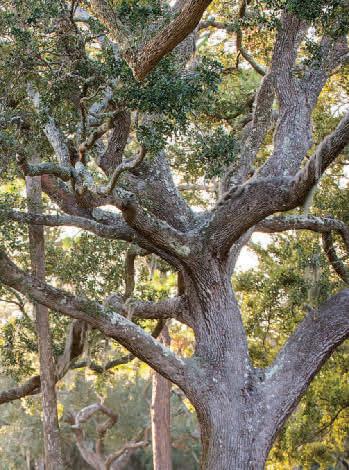




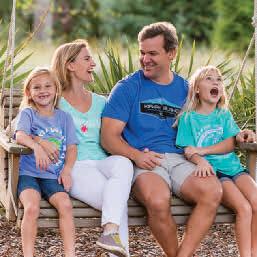

TURNING YOUR VACATION MOMENTS INTO MEMORIES SHOP IN FRESHFIELDS | SHOP AT THE STRAW MARKET 843.329.1394 843.768.1284 T-shirts. Mugs. Gifts. And all kinds of other ‘rememberies.’ In all sizes, shapes, and colors for everyone you like or love. Especially you.
 WRITTEN by JONATHAN SANCHEZ
WRITTEN by JONATHAN SANCHEZ
LIKE NOBODY’S WATCHING
 PHOTOGRAPHY by OLIVIA RAE JAMES
PHOTOGRAPHY by OLIVIA RAE JAMES

38 LEGENDS MAGAZINE 2017 NO 28
We’d been at the beach a couple of days. You don’t realize how much you’re escaping until you’re gone. You think you’re going for the pluses: the beach and the golf and the pool with the flume waterslide, but the minuses, the things you leave behind, count almost as much. No inputting invoice numbers, no moving the car for street sweeping, no deciding what to wear to the silent auction.
Still, the older I get, the harder it is to get into vacation mode. Even while walking on the beach, the stresses of everyday life kept scrolling through my head.
Going by The Sanctuary, I passed a beachfront wedding, the bride barefoot in a white dress. She was holding a bouquet of gardenias and looking at her new husband as he said his vows. If a tidal wave had hit, I don’t think she would have noticed.
I was instantly taken back ten years to my wedding, our first dance, Mark and I gazing at each other like we were the only people in the world. I found myself feeling a sugary crush for him all over again.
I turned around and headed back, looking forward to the afternoon. We were going to take the kids on a bike ride to the nature center, get some pictures with the turtles and snakes.
As I got back, Tanner came running at me, dirty blond curls bouncing, legs churning as fast as they could. He was three and still had a little bit of baby fat, and when he ran he only pumped his left arm.
“Momm-maaaaayyyy! We saw dollllphinnnnns!”
I picked him up and carried him over to Mark and Sally.
“Hey, Superdad,” I said, kissing my groom on the side of the mouth.
“You have a good walk?”
“I did.”
I was still feeling that cotton candy crush.
Sally had found a horseshoe crab that was flipped over on its back. Mark showed her how to turn it back over.
“Careful,” he said. “Not by the tail…”
She was so proud. I had to take her picture.
“Honey, hand me my phone, will you?” I said.
I don’t know what it is with men always wanting to throw things. Yes, as he pointed out many times afterwards, it was a “perfect toss,” but I’m not a first baseman, and I was standing in a tidal pool.
In one salty splash, the whole afternoon went sideways. Mark went from being the groom that made me weak in the knees to the spouse I wanted to knee in the crotch. Tanner had a meltdown over yogurt. “This is strawberry banana! I wanted JUST STRAWBERRY!” Sally pouted because the nature center excursion was postponed. And my phone was in a bowl of rice, fighting for its life.
I do give Mark credit for trying to lighten the mood. “Taking young children to the beach is like being a servant at Downton Abbey,” he said. “It’s a different kind of vacation when you’re beholden to people who have to be dressed, fed, slathered in sunscreen, and have no idea what a weekend is.”
LEGENDS MAGAZINE 2017 NO 28 39
I left Mark and the kids lounging in a tidal pool and went for a walk.
“I guess I’m used to checking the basement when it rains,” he said.
“Don’t have to worry about that here,” I replied.
We opened the French doors onto the porch and listened to the rain.
“Hey,” he said, “do you want to dance?”
“Oh, I don’t know…”
He held up a CD: Beach Music Classics
“I found this in the bookcase.”
“Jan and Dean at two a.m.? Got anything mellower?”
“No, no.” He put the disc in the stereo. “This is Carolina beach music, shagging music.” He pushed play on an old song by The Drifters.
This magic moment
So different and so new
I was just trying to be a good sport. I closed my eyes, put my hands on his shoulders.
Sweeter than wine
Softer than the summer night
The rain was coming down steadily. No aromatherapist could ever simulate the heady mix of air we were swimming in the pluff mud and the ocean, the fresh rain, the lingering whiff of sunscreen.
And then it happened
It took me by surprise
I knew that you felt it too
By the look in your eyes
Somewhere in the middle of the song, somehow just another night of Pull-Ups and pj’s turned into our wedding night all over again. Better, really. The night we got married, our whole lives were ahead of us, and our only worry was making our flight the next morning. Now we still had so much ahead of us, but we also had so much to be proud of: a home, two beautiful children.
We’d tried so hard to make our wedding special the right colors and parting favors, and so on but the life we’d built together over the last eight years, the pigs-in-a-blanket and the homegrown tomatoes, the crayon art work, the bedtime songs and inside jokes, it was exponentially more unique and powerful. It was something entirely us.
40 LEGENDS MAGAZINE 2017 NO 28
That night it stormed hard. I got out of bed. Mark was already up.
“Can’t sleep?”




LEGENDS MAGAZINE 2017 NO 28 41
My phone revived but I found myself using it less. More often I had a colored pencil in my hand, helping Sally with her journal. She wrote and drew pictures about the sandcastles she built daily, the king snake she got to hold at the Nature Center, the nest of owlets we discovered (4 Tiny Beakd Fuzzballs!!!).
Tanner and Mark named all the anole lizards on the porch.
“This one’s Buck. He’s the head lizard. This one’s Polly. She’s the teacher lizard.”
“What about this guy on the screen?”
“He fixes the lizard motorcycles.”
The nights were quiet. The music of The Drifters, The Tams, and the Swingin’ Medallions mixed with the surf and the cicadas. The same sounds people had heard along the South Carolina coast for decades.

42 LEGENDS MAGAZINE 2017 NO 28
After that our days on the Island were different.

LEGENDS MAGAZINE 2017 NO 28 43
I dropped the kids at school and went for a walk before work. Submit payroll / Schedule the Irvin walk-through / Pick up snacks for Tanner’s class… Before letting my list scroll through my head, I took a deep breath and reached into my storehouse of Kiawah memories: Sally paddling her own kayak. Orange popsicle dribbles running down Tanner’s little brown belly. And slow dancing with my husband, sand on our feet, the rain falling hard on the porch roof. — J.S.
44 LEGENDS MAGAZINE 2017 NO 28

LEGENDS MAGAZINE 2017 NO 28 45
 WRITTEN by PETER DEL TREDICI the
WRITTEN by PETER DEL TREDICI the
GINKGO TREE


No tree survives these conditions better than the fabled Ginkgo biloba, with its fan-shaped leaves. Even the most botanically illiterate New Yorker can recognize the tree when its buttery yellow leaves litter the sidewalks in the waning days of autumn.
The easy identification is possible because no other tree produces leaves remotely similar to those of the Ginkgo, and its erratic growth habit branches spreading out in radically different directions also contributes to its easily recognizable appearance. Ginkgo’s uniqueness stems from the fact that it is the sole survivor of a lineage that dates back to the Jurassic Period, roughly two hundred million years ago, well before the time when dinosaurs ruled the earth. Beginning about one hundred million years ago, Ginkgo and its relatives began to decline in both abundance and diversity, most likely as a result of increased competition from recently evolved flowering plants, with their faster growth and more efficient reproductive systems. By fifty-six million years ago, the genus Ginkgo was reduced to a small number of species spread across the colder parts of the northern hemisphere, and by the end of the Pliocene Epoch about 2.5 million years ago Ginkgo disappeared completely from both Europe and North America. It nearly became extinct in Asia as well, but somehow the species
we call Ginkgo biloba managed to hang on in a few isolated populations in the mountains south of the Yangtze River in central and eastern China.
Remarkably, small remnants of the original wild populations still exist in central China on Jinfo Mountain, near the city of Chongqing, and on Tianmu Mountain in eastern China, near Hangzhou. I was fortunate enough to visit both of these locations several times between 1989 and 2007, during the course of my botanical career at the Arnold Arboretum of Harvard University. The populations are tiny, consisting of several hundred individuals at most, growing amidst small patches of old-growth forest hemmed in on all sides by local agriculture. Many of the trees in these locations have multiple stems, a result of sprouting back after some traumatic injury, such as from logging or landslides. It’s nothing short of miraculous that these trees managed to survive into the twenty-first century given that all of its relatives went extinct millions of years earlier. Ginkgo is the ultimate living fossil, and being able to study it today is like having a live Tyrannosaurus rex in the local zoo.
The earliest written reference to the existence of the Ginkgo tree is cited in a book by a “learned monk” in the year 980 in
LEGENDS MAGAZINE 2017 NO 28 49
New York City, despite its oceans of pavement and forests of skyscrapers, supports a surprising number of trees. And I’m not just referring to Central Park but also to the remarkable collection of specimens that seem to grow, albeit slowly, surrounded by concrete.
China. A few decades later, in a famous poem, the Chinese historian Ouyang Hsiu described how the “duck-foot tree” (a name based on the Ginkgo’s fan-shaped leaves) originally grew south of the Yangtze River and how its seeds were sent every year to the ancient capital of Kaifeng as a tribute. Through the efforts of the emperor’s son-in-law, the tree was eventually brought into cultivation, and from there it was spread throughout the rest of the country. From that time through today, Ginkgo has been widely cultivated in carefully tended orchards in China for the nuts produced by select female trees, which outnumber male trees by as much as one hundred to one.
From China, the Ginkgo tree spread first to Korea and, by the fifteenth century, to Japan. Buddhist monks were clearly instrumental in expanding the distribution of the tree given that many of the oldest and biggest trees in both of these countries now grow on the grounds of ancient temples. Some writers have interpreted this to mean that Buddhist monks were responsible for saving the Ginkgo from extinction, but history indicates that the edibility of its seeds rather than its spiritual significance was a prime motivator for its preservation.
The Ginkgo tree first came to the attention of Europeans through the work of Engelbert Kaempfer, a botanist-physician who lived in Nagasaki, Japan, for two years and worked for the Dutch East India Company. While Kaempfer published a description and illustration of the tree in 1712, the first viable seeds did not arrive until some time after 1730. Ginkgo was extremely rare in Europe until the late 1750s, when an
English nurseryman, James Gordon, got ahold of a plant and began propagating from cuttings and distributing to wealthy gardeners throughout the continent. Because Ginkgo trees are either male or female, and because mature trees were few and far between at the time, it wasn’t until 1835 a hundred years after its introduction that the separate sexes managed to come together and produce viable seeds. Remarkably, this event happened on a male tree in Montpellier, France, onto which female branches had been grafted five years earlier!
The Ginkgo reached North America in 1784 through the efforts of a wealthy Philadelphian, William Hamilton, who imported it from England. By the early 1800s, the tree began appearing on the estates of notable plant collectors in the northeast, and it remained an expensive collector’s item until the late 1880s, when the first American-born trees began producing viable seeds in Kentucky. The ability to produce the tree from seed rather than cuttings brought the price of the plant down and opened the door to its new career as a street tree that could brighten the darkest city sidewalks.
The tree’s popularity rose in the early 1900s when people realized that, unlike many native trees, it was tolerant of the air pollution choking many cities as a result of burning coal. In addition, Ginkgo was not bothered by the pests and pathogens that damaged many other city trees. By the 1930s and ’40s, however, a downside to the use of Ginkgo as a street tree became apparent, namely that female trees, once they reached sexual maturity, littered sidewalks with an abundance of messy “fruits” that smelled wretched. Unlike the Asian cultures that accepted the smell of the fleshy seed coat because of the edible nut it contained, Americans did not eat the seeds and rejected the female trees going so far as to cut many of them down. Nurseries quickly adapted and began to recommend only planting seedless male trees propagated by grafting.
In the twenty-first century, Ginkgo is experiencing a dramatic surge in popularity throughout the United States and Europe. Not only is the tree tolerant of drought, heat, air pollution, insects, and fungal pathogens, but it is also legendary for its ability to survive environmental catastrophe most famously, the A-bomb dropped on Hiroshima in 1945. In addition, conservationists have given Ginkgo a pass for being an “exotic” species
50 LEGENDS MAGAZINE 2017 NO 28
Buddhist monks were clearly instrumental in expanding the distribution of the tree given that many of the oldest and biggest trees in both of these countries now grow on the grounds of ancient temples.
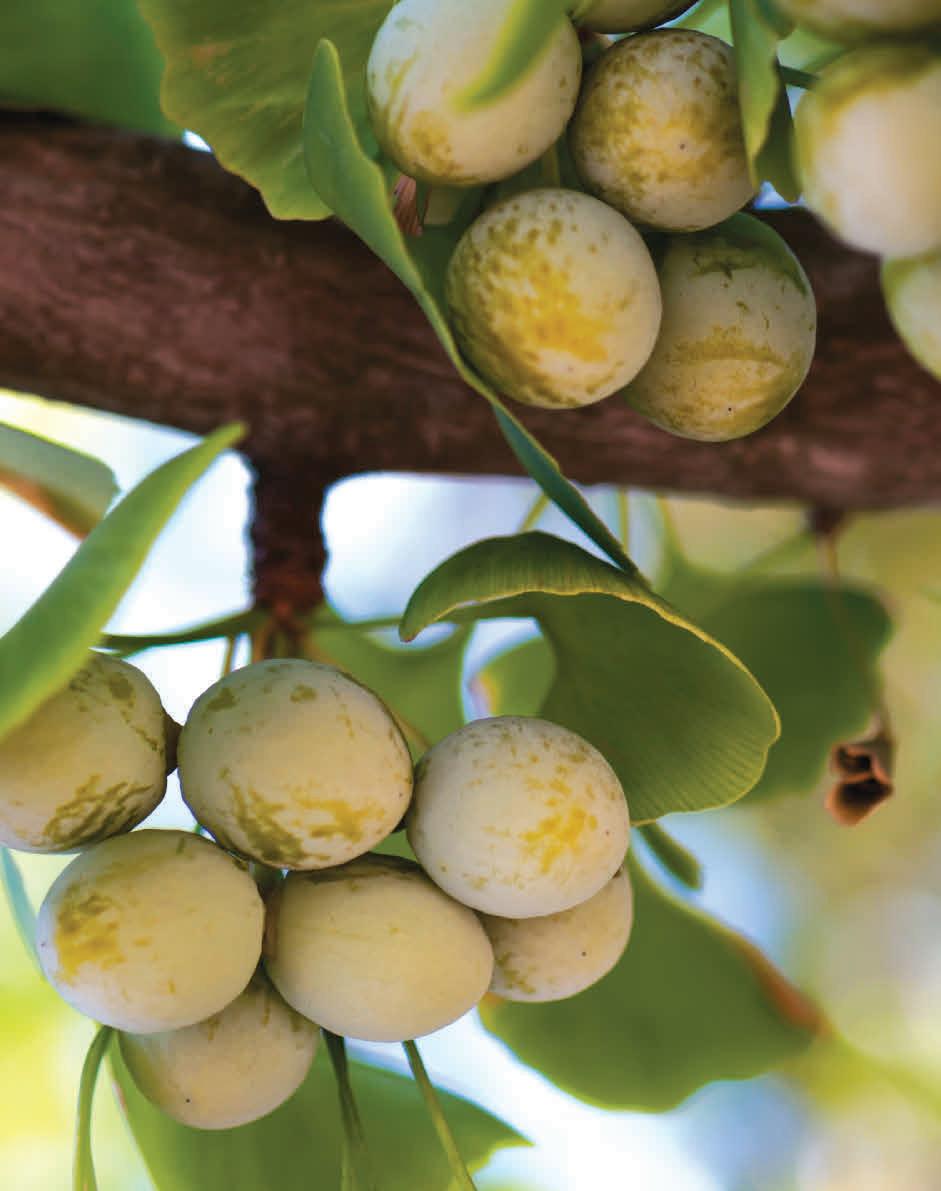
LEGENDS MAGAZINE 2017 NO 28 51

with little or no tendency to become problematically invasive like the kudzu vine.
In addition to its recent career as a street tree, the Ginkgo managed to produce an encore performance that began in, of all places, a corporate board room in Karlsruhe, Germany. It was there, in 1965, that the Willmar Schwabe Company first registered the use of an extract of Ginkgo biloba leaves for a variety of medicinal purposes, including the improvement of memory function. The first commercial extract produced by this company (known as EGb 761) hit the market in 1974 and quickly became a success in Europe, from whence its use spread to the United States in the 1980s. To meet the growing demand for Ginkgo leaf extract, the company established two large plantations in 1981 one in Bordeaux, France, and the other in Sumter, South Carolina.
The plantation in Sumter spans one thousand acres and contains almost a million trees, spaced about a yard apart in rows that are sixteen inches apart. Contrary to what one might expect, the leaves are picked from the trees at the height of the growing season, in mid-to-late summer, while they are still bright green. And every three to four years the plants are cut back to ground level during the winter. This drastic pruning regimen keeps the trees below eight feet tall, which allows the leaves to be stripped off the trees using mechanical harvesters. The trees sprout back from their stumps or trunks in early spring, typically producing two or three feet of new growth before the next cycle of leaf harvesting begins. Such resilience in the face of this horticultural brutality comes as no surprise given that many of the ancient Ginkgos I saw in China sprouted from the base just like the young trees in Sumter. Clearly Ginkgo’s fifty-six-million-year history has prepared it well to withstand the rigors of modern industrial agriculture. — P.T.

LEGENDS MAGAZINE 2017 NO 28 53
PROFILE
Teil Henley talks about her blossoming career and what she calls “happy accidents” in her playful and vivid fauvist series.

54 LEGENDS MAGAZINE 2017 NO 28
TEIL HENLEY


SWIFT BLUE, 30X40 56 LEGENDS MAGAZINE 2017 NO 28
The artist’s latest series lines the walls: portraits of deer, elephants, and cows rendered in bright hues. The space matches the artist. Teil’s blue eyes twinkle, her smile bright and warm. The work, the space, the artist it all fits.
Originally from Columbus, Georgia, Teil majored in art at Auburn University. It was a frustrating experience. She dove deep into the context and theory of her art rather than the technique. To me, it was so much focus on concept that it turned me off from the technical process, she says. What about colors? What about style? Her paintings back then were tight, realistic. She graduated none the wiser on the business of art, the practical side of being a working painter.
After college Teil moved to Charleston and worked odd restaurant jobs and helped out in a preschool. After a few years, she stumbled upon Redux, the shared artist space on St. Philip Street. I was blown away, she says. I saw a few women, young ladies, making art for a living. I didn’t even know it was possible to be an artist. So she quit her restaurant job, took out a small loan, and secured a space at Redux.
It was a very scary couple of years, she remembers. It was constant doubting—in myself and in my work. However, that risky first step of committing to art full time gave her the energy to completely focus on her craft.
For the first year, Teil painted the odd commission and experimented. It was trial and error, she remembers. Every fifteen paintings or so I came up with something good, but everything else I would chunk. She began attending figure drawing classes, and for two years she honed her skills. She switched from oil to acrylic, and she developed a style. She painted the figures in classic loose form; the color schemes became fauvist and vibrant. Something clicked.
I opened up an online shop and went crazy emailing bloggers, asking them to feature my work. Then there was no looking back. Teil moved on from figures into an era of beach and pool scenes with light happy palettes with angular figures and patterns. I always reference a photo. When I am taking photos, light is everything. My process has a lot to do with light and shadow. It’s the way I manipulate colors and
LEGENDS MAGAZINE 2017 NO 28 57
Walking into Teil Henley’s studio is like walking into a happy dream. Sun streams through the high windows, pinks and greens splash against white walls, a thick turquoise rug is soft underfoot , and tubes of acrylic paint are strewn about work tables.




58 LEGENDS MAGAZINE 2017 NO 28

CRANBERRY TWIST, 30X40
make my subjects dimensional. Her paintings lie somewhere between realism and abstraction bright shapes in concert to create the larger whole. I start with a rough sketch, and then I’ll mess it up completely with underpaintings. Then those layers come through as happy accidents.
Teil works in series. So far, she has created “beach babes,” “flowing dresses,” “pool scenes,” and “beach close-ups.” While her process is still very intuitive, Teil is meticulous about her brand, her promises to followers. It’s all about finding a balance between inspiration and determination, she says. Her social media following is massive and entire series often sell out in a day.

When I think of the future, I’m excited to push my technique and approach. I love moving on to a new series—learning to paint new subjects.
Teil just celebrated her one-year wedding anniversary to PGA golfer Russell Henley. Russell is an ambassador to the Kiawah Island Club, and the newlyweds live in Mt. Pleasant. — H.W.
60 LEGENDS MAGAZINE 2017 NO 28
CÔTE DE CITRON, 36X48










LUMBER • HARDWARE • WINDOWS • DOORS • MILLWORK • KNOWLEDGE bucklumber.com Charleston, SC EVERYTHING LOOKS BETTER WINDOWS - through ourCOME SEE WINDOWS FROM THE WORLD’S MOST NOTABLE BRANDS IN PERSON AT OUR EXCLUSIVE DESIGN CENTER
Photo by Michael Cyra
FineMark



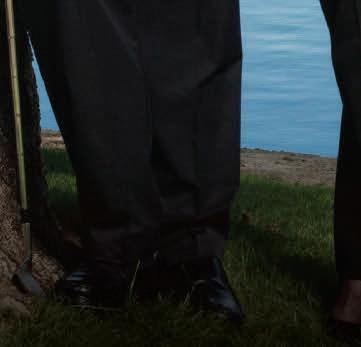

is an integral part of our team.









“Sally and I have had the good fortune to associate ourselves with a great team of trusted advisors over the years. FineMark is an integral part of that team. We are not just clients, we are also shareholders and feel very much part of the FineMark family.”




 Sally Irwin
Hale Irwin
Hall of Fame Golfer
1991 Ryder Cup Champion
The Ocean Course at Kiawah Island
Michael Drohan, Charleston President Daniel Vroon, Market Executive Christopher Abbott
Sally Irwin
Hale Irwin
Hall of Fame Golfer
1991 Ryder Cup Champion
The Ocean Course at Kiawah Island
Michael Drohan, Charleston President Daniel Vroon, Market Executive Christopher Abbott
•


Lowcountry DentaL associates Changing Smiles, Changing Lives WWW.LOWCOUNTRYSMILES.COM Dr. Rob Gamble 3464 MAYBANK HIGHWAY JOHNS ISLAND, SC 29455 843.559.3530 Dr. Randy Jones












Serving the Lowcountry for 25 Years Discover Outdoor Living Trends POOLS | SPAS FOUNTAINS | WATER FEATURES AquaBluePools.net 843-767-POOL New! Outdoor Design Studio Featuring pools, water features & more! Call to schedule a private tour. DESIGN BUILD RENOVATE SERVICE
Photo by Clint Fore





WCSR.COM Life on Kiawah is supposed to be relaxing. And that means not having to worry about your estate. Womble Carlyle helps individuals achieve their gift and estate planning goals. We guide our Trust & Estates clients every step of the way, from advising on tax consequences to implementing plans. You’ve earned peace of mind. Let Womble Carlyle help you find it. Graeme Philp 843.720.4642 | GPhilp@wcsr.com James Wilson 843.720.4640 | JmWilson@wcsr.com W. Foster Gaillard 843.720.4610 | FGaillard@wcsr.com WOMBLE CARLYLE SANDRIDGE & RICE, LLP ©2017 5 Exchange Street, Charleston, SC 29401
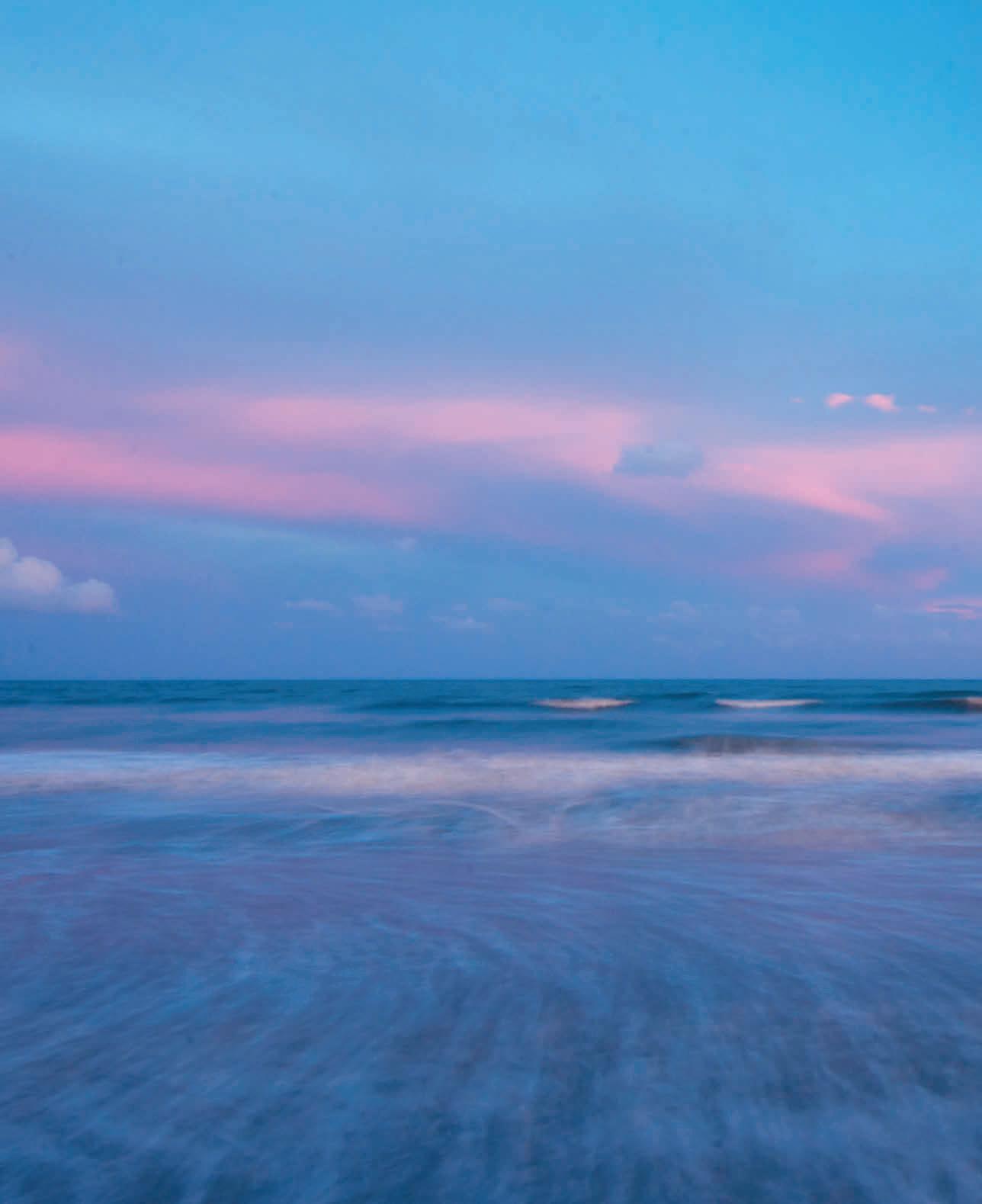




Your Premier Sports and Outfitters Shop on Kiawah and Seabrook Islands Athletic, Outdoor, Casual, and Dress Footwear for the Whole Family The First Ever Southern Tide Signature Store Featuring Men’s and Women’s Apparel Over 110 Bourbons, 100 Scotches, and the Top 200 Spirit Brands PlayHARD LiveWELL LoveNATURE Classic Spirits, Expert Service, and More! Athletic, Outdoor, Casual, and Dress Footwear seacoastsports.com 843.768.8486 | 585 Freshfields Drive coastalfootwear.com 843.768.8488 | 625 Freshfields Drive southerntidekiawah.com 843.768.5700 | 475 Freshfields Drive kiawahspirits.com 843.768.2244 | 541 Freshfields Drive KIAWAH SPIRITS FOUR GREAT STORES IN FRESHFIELDS VILLAGE



Charleston 843-243-0790 www.waynewindhamarchitect.com


THOMAS & DENZINGER ARCHITECTS www.thomasanddenzinger.com 843 723 6651


©2016 JELD-WEN, Inc. *In most jurisdictions, ImpactGard will satisfy the requirement for storm shutters. Check with your local building official. JELD-WEN provides the style you want coupled with the protection you need in harsh coastal climates. ImpactGard™ glass makes it possible, eliminating the need to board up windows or add shutters during severe storms.* It’s all beauty, all the time. Coastal Protection ELEGANCE THAT STANDS UP TO THE ELEMENTS jeld-wen.com 630 Skylark Drive, Charleston, SC 29407 843.572.9727 | 800.899.5721 Muhler.com
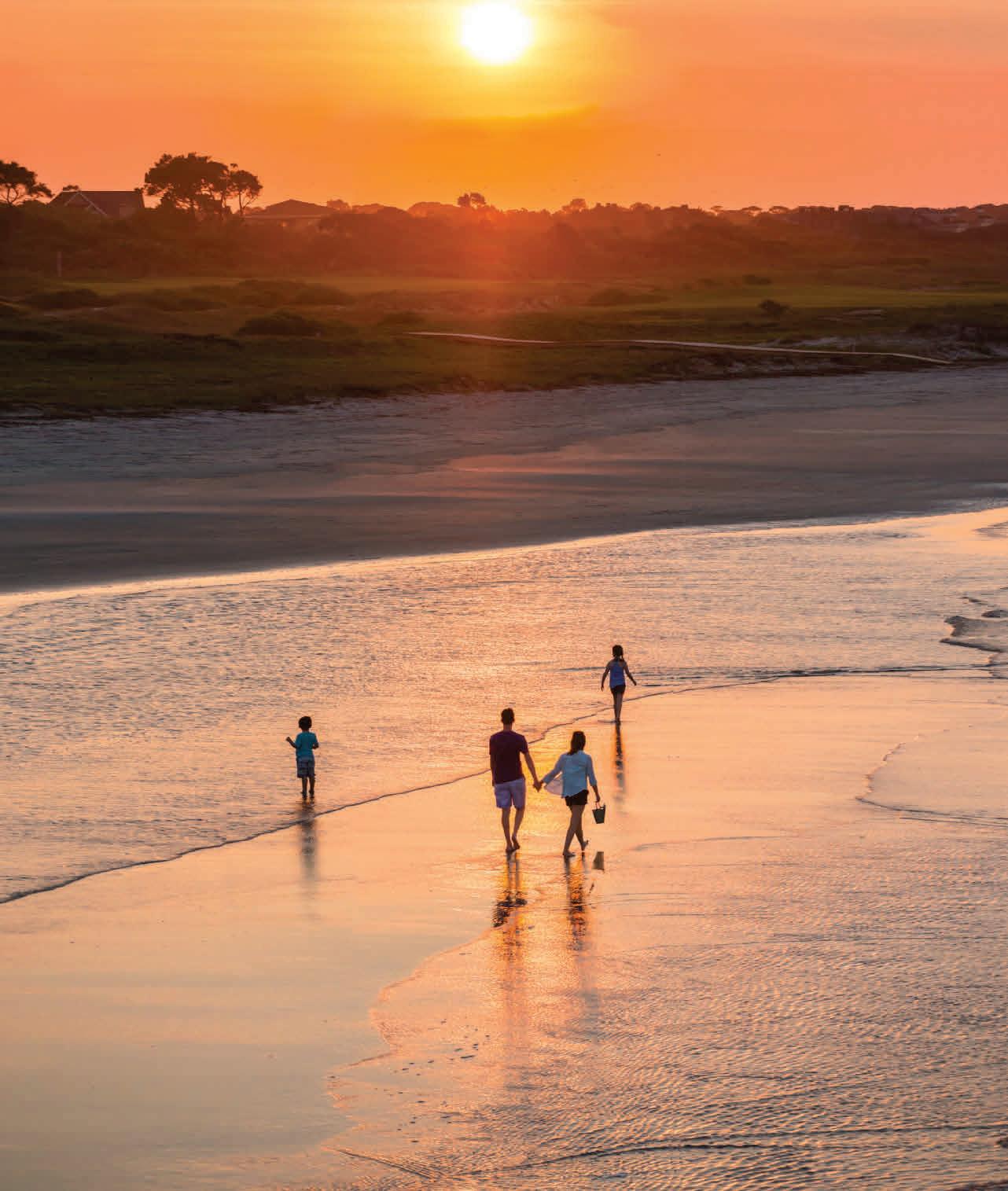


4230 River Road | Johns Island, SC 29455 | 843-367-9875 CREST Contractors, LLC
Photos by Patrick O’Brien
Island |
Paul Koenig “Let Us Share Your Vision” crestcontractors.com
The Marsh House on Kiawah
Photography by Patrick O’Brien
BECAUSE TOMORROW HAPPENS IN THE BLINK OF AN EYE
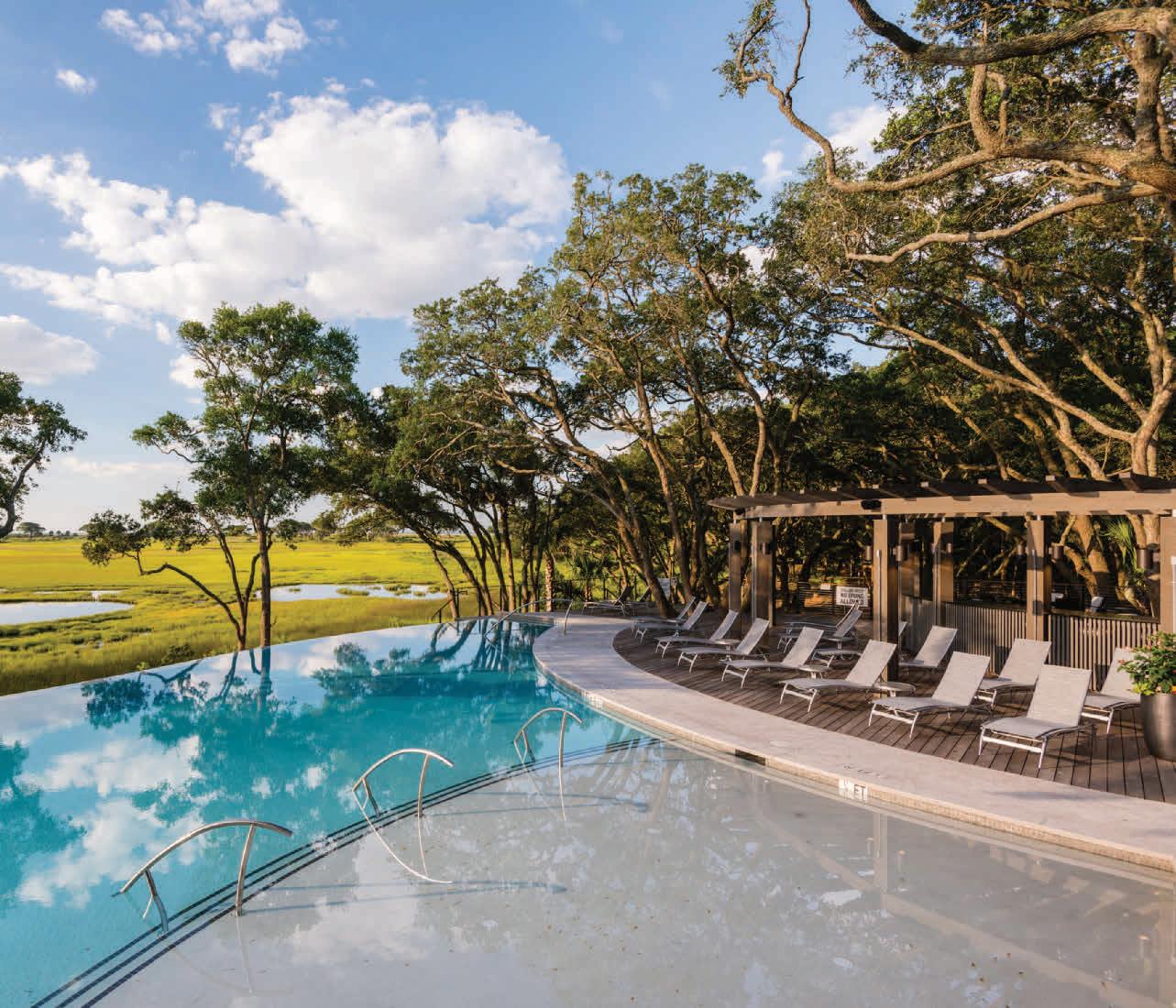





TOP 10 PLACES TO BUY A SECOND HOME - Barrons, 2016 | KiawahIsland.com



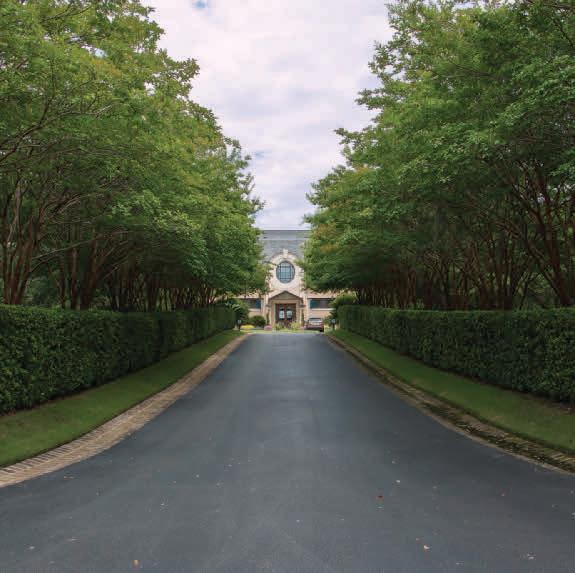


67 Years of landscape architecture, installation, maintenance, custom hardscapes, concrete and sitework. RESIDENTIAL AND COMMERCIAL 5629 Savannah Highway, Ravenel, SC 29470 | 843.564.1315 | 3oakscontractors.com THREE OAKS CONTRACTORS, INC. III OAKS SINCE 1950




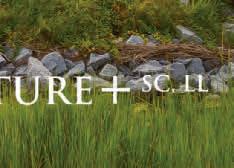
WHEN DESIGN MATTERS MOST Charleston Kiawah Seabrook 1101 Landfall Way, Seabrook Island SC. 29455 (843) 442-0173 1044 E. Montague Ave. Suite 201 N. Charleston, SC. 29405 (843) 718-3416 www.architectureplusllc.com

JULIA LYNN PHOTOGRAPHY
Rite of Spring
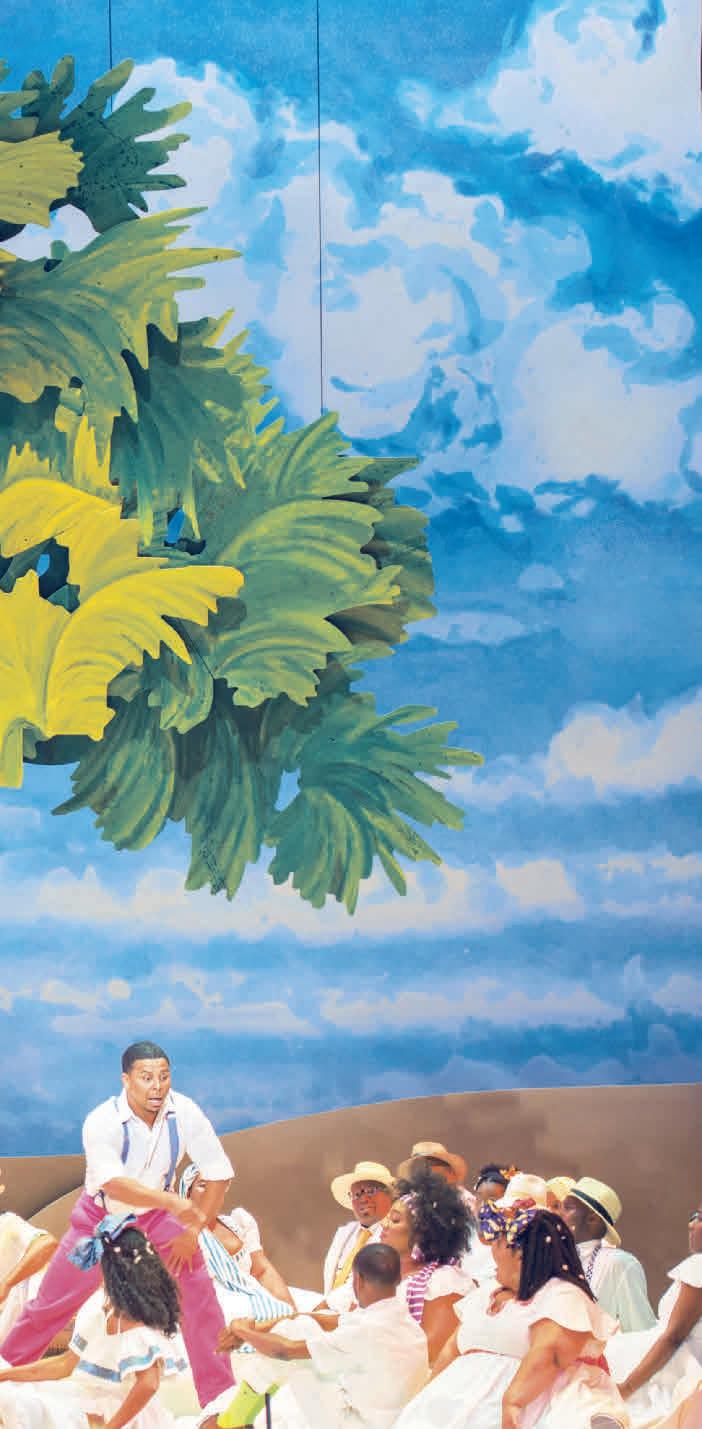
SPOLETO FESTIVAL USA
CELEBRATES THE BIG 4-0, AND WITH A MIDLIFE CRESCENDO NO LESS
WRITTEN by STEPHANIE HUNT
LEGENDS MAGAZINE 2017 NO 28 77
There is a moment, the split second when the first chords of music fill the air and the audience gets a glimpse at what is to come. That magical moment this past May—as the curtain rose on the Gaillard Center stage to reveal an astonishingly gorgeous wrought iron gate behind which a Charleston streetscape came to life—elicited one tremendous and thrilling collective gasp of delight. This was how Spoleto Festival USA unwrapped its gift of Porgy and Bess —with imaginative wow and exuberant beauty. And in doing so, it set the tone for the next seventeen days during which the Spoleto Festival USA celebrated its fortieth season.
Charleston’s venerable springtime arts bash embraced turning forty with gusto. Far from any hints of midlife crisis, it commanded the stage (all fourteen of them) with soaring poise.
It dazzled with vitality and danced with bravado, affirming to opera lovers and hip-hop fans alike that creative inspiration and expression may well be the fountain of youth. Case in point: artist Jonathan Green, ever elegant and (despite fiveplus decades as a working artist) apparently ageless, who was ubiquitous during the 2016 festival.
Green’s Gullah-inspired painting Harvest Gathering was featured on the Festival poster and graced the covers of some 25,000 program guides; his innovative design direction and jubilant costumes were the centerpiece of the much-raved about Porgy and Bess production; his handiwork was woven throughout Charleston neighborhoods via site-specific African-inspired installations on “Porgy Houses;” and the artist himself, looking young and dapper, was on hand at all six Porgy and Bess performances to greet guests and offer a soft-spoken word of gentlemanly welcome.
This is how Spoleto at forty does grand opera and brings Porgy home—with a personal, local touch and by creating
an expansive sense of “home,” thanks in part to Gershwin’s iconic music and to Green’s imaginative approach. Indeed, as an unofficial ambassador of the Lowcountry’s cultural riches, Green represents all that the Festival has embodied since its inception in 1977: a sense of place, a commitment to exploration and discovery, and an unbridled appreciation for the power of art to bring people and cultures together.
There was, however, one definito absence during this fortieth season. The 2016 opening ceremony was the first time in four decades that Joseph P. Riley Jr., who recently stepped down as mayor of Charleston, did not preside over the festivities and offer greetings in enthusiastic, if imperfect, Italian.
Indeed, Joe Riley was pivotal back in the mid 1970s, when Gian Carlo Menotti first proposed to bring Spoleto Festival to an unpolished and economically challenged Charleston. Menotti first founded the Festival of Two Worlds in 1958 in Spoleto, Italy, and then selected our historic seaside town as a counterpart location in the United States. The proposition was met with skepticism. Launching an international arts festival seemed audacious, and would undoubtedly be risky and costly (an $800,000 budget plus a $70,000 overrun for
78 LEGENDS MAGAZINE 2017 NO 28

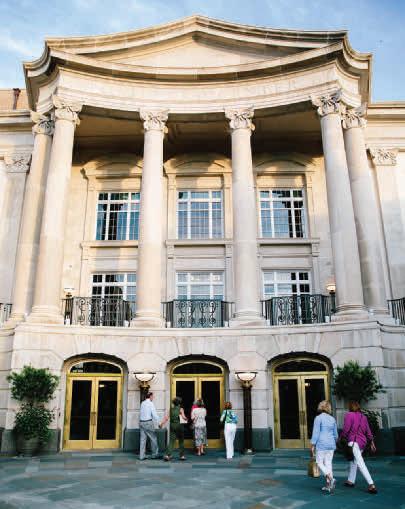


LEGENDS MAGAZINE 2017 NO 28 79 PHOTOGRAPHY BY CHARLOTTE ELIZABETH AND MELISSA TOMS
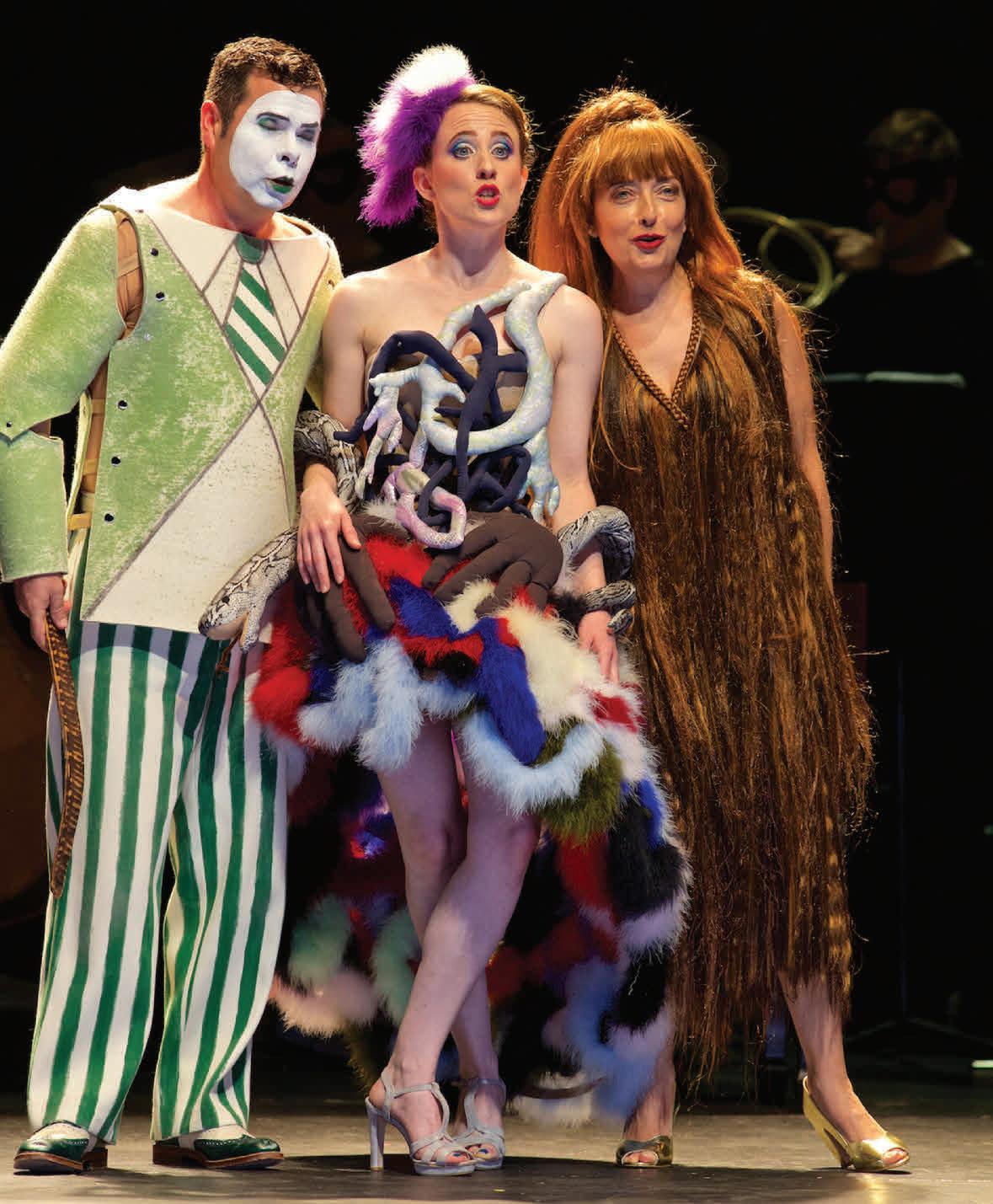
JULIA LYNN PHOTOGRAPHY
the twelve-day, one hundred-event run that inaugural year), but the young Riley along with College of Charleston thenpresident Ted Stern remained its dogged champions.
They understood the transformative power of the arts. They knew that Festival-goers would have “their hearts moved, their souls touched, their horizons lifted, their aspirations enhanced, their creative impulses charged, their anguish soothed,” as Riley would say (in English) in each year’s opening remarks, by the dynamic collage of music, dance, theater, poetry, and “the unrelenting quest for excellence” that Spoleto offers. And that in turn, the fabric of the city itself would also be changed.
This vision has been borne out in numerous ways over the years—with the Spoleto-spurred opening of new hotels and restaurants, with the growth of local arts organizations (pre-Spoleto, the Charleston Symphony Orchestra played six concerts a year with an annual budget of $50,000; by 1986 that expanded to nineteen concerts and a $625,000 budget), and with the restoration of the Dock Street Theatre, Memminger Auditorium, the Spoleto headquarters on George Street, and in various site-specific installations around town. And Spoleto’s success helped birth the City’s complementary Piccolo Spoleto Festival. But perhaps the most obvious recent example of the Festival’s impact was Spoleto’s return last May, after a three-year hiatus, to a brand-new Gaillard Center, proudly sporting a $142 million face-lift. Quite a swanky fortieth birthday present.
With fine-tuned acoustics, jewel box hues, plush mohair seats, and classic architectural detail, the overhauled Gaillard Center set the tone for a memorable anniversary year, beginning with an opening night performance of Porgy and Bess, “the only choice,” says Spoleto Festival USA general director Nigel Redden, to appropriately mark the return to the Gaillard. The opening weekend also included a 40th-
Season Celebration Concert conducted by Steven Sloane. The program showcased Spoleto all-stars, such as soprano Jennifer Check, tenor Victor Ryan Robertson, jazz vocalist René Marie, and chamber music favorites Geoff Nuttall et al., and a world premiere of a John Kennedy composition (dedicated to Joe Riley). There was also a Menotti aria on tap, and the perennial Festival sound machine, the Westminster Choir, offered “a stunning moment,” according to The New York Times review of their rendition of Stephen Paulus’s “Hymn to the Eternal Flame,” with choir members “angelically deployed” on opposite sides of the Gaillard’s top balcony.
And that was just for starters. The next two weeks witnessed similarly bold and triumphant performances on grand stages like the Gaillard and more modest venues like the Simons Center Recital Hall, where jazz great Freddy Cole’s quartet needed zero embellishment. For the opening night concert in the Cistern Yard, Nashville’s raucous Old Crow Medicine Show made even the Spanish moss do a little jig. Then juxtapose Old Crow’s high-energy romping and stomping with the pared-down perfection of Manual Cinema’s shadow puppet poetry in ADA/AVA—or with the eloquent, muscular precision of the Bill T. Jones/Arnie Zane dancers or the Gate Theatre’s spot-on delivery of Oscar Wilde witticisms—and you get a small taste of the 2016 Festival’s rich smorgasbord.
Then there was the razzle-dazzle of Porgy and Bess, which The Telegraph of London called “a momentous and triumphant homecoming;” the consistently delightful Bank of America Chamber Music series, thanks to the finesse, humor, and unbridled talent of Nuttall and his St. Lawrence String Quartet; and the more daring, some might say dissonant, productions like Helmut Lachenmann’s U.S. premiere of The Little Match Girl, in which 106 musicians perform on scaffolding encircling Memminger Auditorium—a “prime
LEGENDS MAGAZINE 2017 NO 28 81
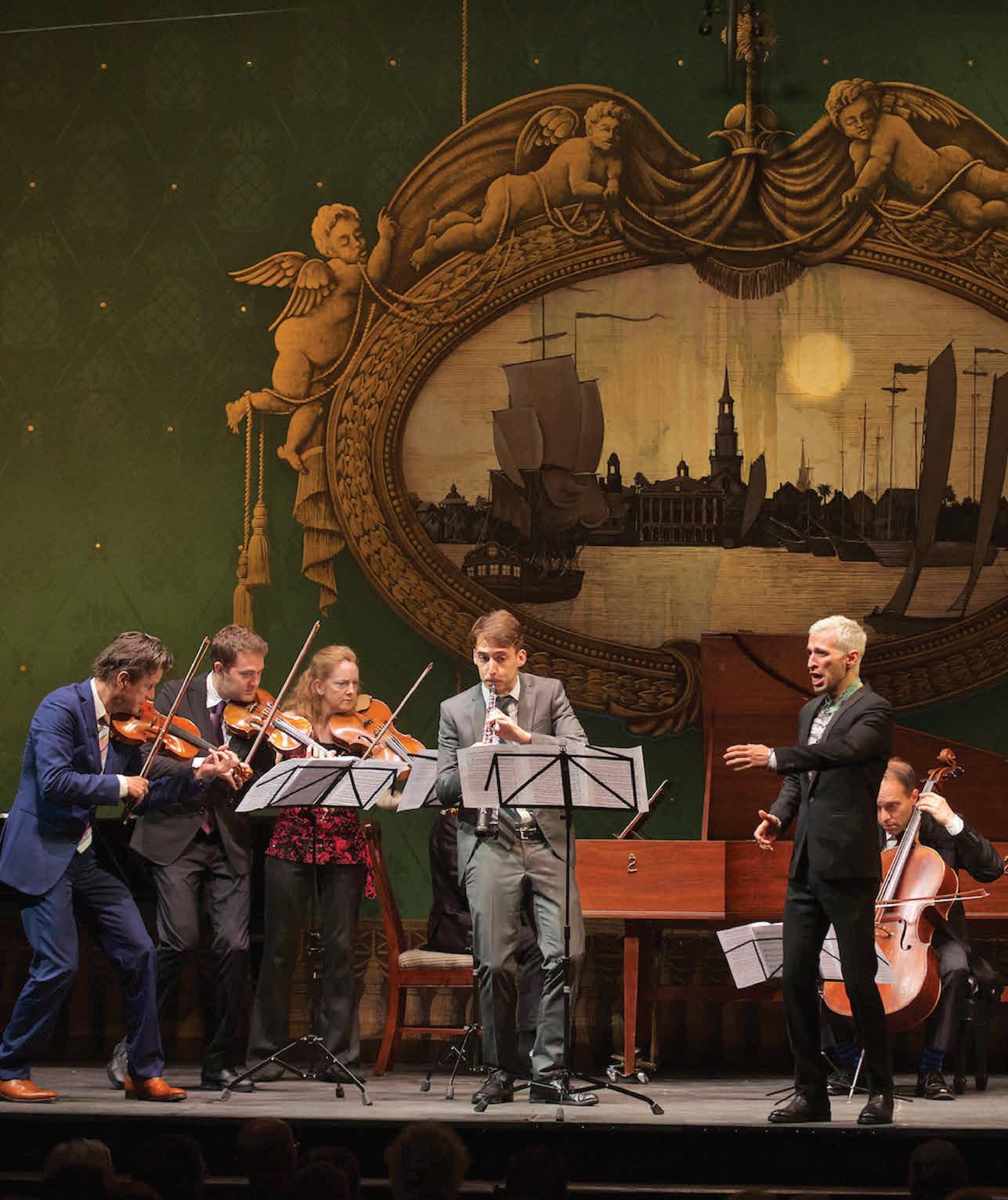
PHOTOGRAPHY BY WILLIAM STRUHS
example of what is so amazing about doing this festival in this city,” says Redden, who in the early ’70s worked alongside Menotti in Italy and has guided Spoleto Festival USA’s course since 1985. “We can do a wonderfully expressive opera like Match Girl by taking a raw black box space like Memminger, which doesn’t exist in most cities, and turn it into a theater in the round.”
“Having all of the performance spaces, which we used at full capacity this year, and marking our fortieth season inspired a robust and celebratory program,” adds Redden. And that robustness spilled out beyond the Festival’s official programs and venues into gardens and courtyards from South of Broad to Kiawah, where private Spoleto soirees and cocktail parties feted visiting performers and arts patrons and kept Charleston’s social scene buzzing till the wee hours.
The late-night Spoleto partygoers, the young children running through the magnificent Middleton Place gardens before the annual Wells Fargo Festival Finale concert begins, and the visitors from forty-nine states who bought opera and theater and dance and jazz tickets this past season—the conjoining of community and creativity: this is how an arts festival forty years young becomes the creative lifeblood of a city, a region. This is our Spoleto. The pulsing brilliance on stage and off, whether it’s the belting baritone of Porgy serenading his woman Bess, or artist Jonathan Green signing a guest’s program, or someone tapping her foot in time to Jason Moran’s reimagining Fats Waller’s tunes as a modern dance party. It’s a reimagining of what’s possible, what’s meaningful, what’s magical, what’s beautiful, for all of us, no matter our age.
Spoleto Festival USA’s 2017 season runs May 26 to June 11. Visit spoletousa.org for details.

LEGENDS MAGAZINE 2017 NO 28 83
— S.H.
“Having all of the performance spaces, which we used at full capacity this year, and marking our fortieth season inspired a robust and celebratory program.”
– NIGEL REDDEN
As Joe Riley remarked near the close of each opening ceremony, “That is the gift of Spoleto Festival USA to this city—the gift of the almost overwhelming responsibility to be even better than before… Whatever it is—designing buildings, or creating programs and initiatives for the poor and our children, creating new economic opportunities or institutions and partnerships—a city just can’t accept mediocrity after having been exposed to this Festival.”

JULIA LYNN PHOTOGRAPHY




LEGENDS MAGAZINE 2017 NO 28 85 PHOTOGRAPHY BY JULIA LYNN PHOTOGRAPHY AND WILLIAM STRUHS
American Alligator Alligator Mississippiensis
The American alligator has a very rough hide covered in heavy scales. The hatchlings are typically black on top with yellow spots or stripes. Males and females look identical.

Males grow nine to twelve feet, and females reach seven to nine feet.
You can find this alligator lurking around all the Island ponds, with especially great viewing at Canvasback, Ibis, and Willet Ponds. Kiawah is home to over five hundred American alligators.
They breed in May and June, and females lay thirty to fifty oblong white eggs in a mound of mud and vegetation. Eggs typically hatch in August or September. Hatchlings grow six to eight inches per year, reaching adult size in ten to twelve years.
Carnivorous! Small alligators eat insects, frogs, snakes, small fish, and turtles. As an alligator increases in size, it switches to larger prey, such as raccoons, wading birds, small mammals, fish, deer, and even other alligators. Alligators do not view people as prey. Island biologists keep a close watch on alligator populations and behaviors.
AVERAGE SIZE 9–12 feet
SPECIES DESCRIPTION SIZE A GLIMPSE LIFE CYCLE MENU
86 LEGENDS MAGAZINE 2017 NO 28
KIAWAH ISLAND FIELD GUIDE
 ILLUSTRATIONS by BECCA BARNET
ILLUSTRATIONS by BECCA BARNET
LEGENDS MAGAZINE 2017 NO 28 87
Painted Bunting
Passerina ciris


The painted bunting is a small, colorful songbird. Males have blue heads, bright green backs, and red rumps. Females and immatures are green and yellow-green.
Adult painted buntings can measure 4.7–5.5 inches in length, span 8.3–9.1 inches across the wings, and weigh 0.46–0.67 ounces.
They are migratory breeders, common in spring, summer, and fall. Find them in shrubland, marsh edges, and dunes. Painted buntings are shy, secretive, and often difficult to observe with the human eye, though they can be fairly approachable when habituated to bird feeders. Males can be quite visible as they tend to perch in the open while singing.
They feed on grass seeds. While breeding, painted buntings and nestlings mainly eat small invertebrates, including spiders, snails, grasshoppers, caterpillars, and other insects. Readily consumes white millet from bird feeders.
The painted bunting can live more than ten years, though most wild buntings probably live closer to five years.
SPECIES DESCRIPTION SIZE A GLIMPSE MENU
LIFE CYCLE
88 LEGENDS MAGAZINE 2017 NO 28
WING SPAN 8.3–9.1 inches
Red drum are silver or red-brown game fish with a black spot near the tail. They are also known as channel bass, redfish, or spottail bass.
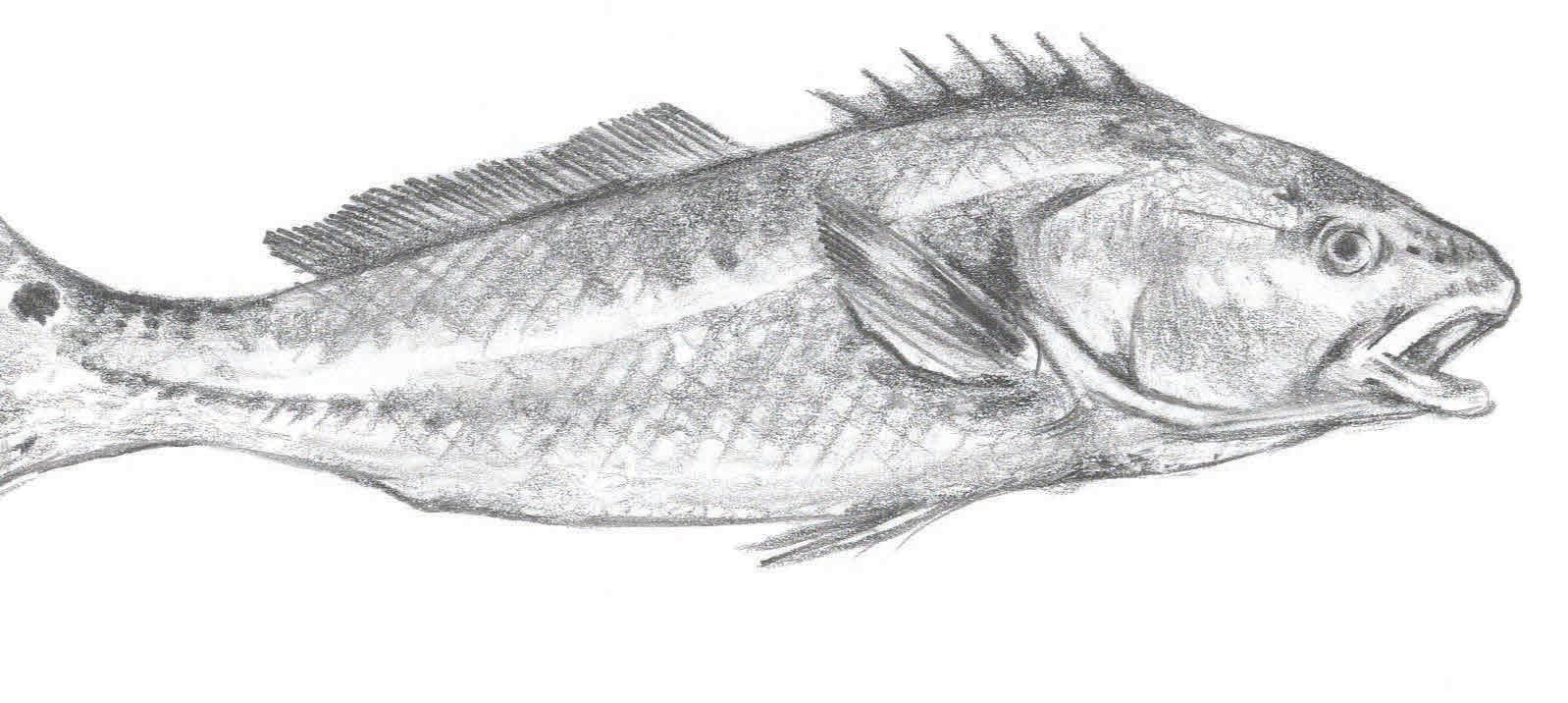
They grow up to sixty inches long and weigh in at eighty pounds. As red drum grow longer, they increase in weight exponentially.
Find them in brackish and saltwater ponds (Canvasback, Egret, Pintail, and Beachwalker), rivers, creeks, and in the ocean.
They eat a variety of prey, including shrimp, blue crabs, fiddler crabs, and fish.
Mature red drum spawn near ocean water from midAugust to October. The red drum’s eggs incubate for twenty-four hours. A female lays about 1.5 million eggs per batch. Red drum can live up to sixty years.

SPECIES DESCRIPTION SIZE A GLIMPSE MENU LIFE CYCLE
inches LEGENDS MAGAZINE 2017 NO 28 89
Sciaenops ocellatus
60
Bottlenose Dolphin Tursiops
The bottlenose dolphin is gray-silver in color, with smooth skin and a prominent dorsal fin.

Adults reach six to ten feet in length and weigh in at five hundred pounds.
You can spot them in the Atlantic Ocean, the Kiawah River, and at Captain Sams Inlet.
These dolphins are carnivorous, feeding on fish, shrimp, and crabs. Kiawah dolphins often engage in a unique behavior called strand feeding. When a pod finds a school of fish, it will circle the school and trap the fish in a mini whirlpool. Then the dolphins will charge in unison at the school, pushing their bodies up onto a mudflat and forcing the fish on the mudflat as well. The dolphins then flop around on their sides, consuming the fish that washed up on shore.
Dolphins breed year round, and typically a single calf is born twelve months later. Dolphins are normally found in groups (pods) of five to ten individuals. Dolphins search for prey using echolocation, similar to sonar.
GROUP SIZE 5–10
SPECIES DESCR. A GLIMPSE SIZE MENU LIFE CYCLE
90 LEGENDS MAGAZINE 2017 NO 28
truncatus
White-Tailed Deer Odocoileus Virginianus
White-tailed deer have a reddish coat during summer, a darker gray coat during winter, and a striking white underside of the tail, which they raise when alarmed. Males have antlers. Fawns have white spots for the first few months of life.
Males weigh between one hundred to one hundred and seventy-five pounds, and females range from ninety to one hundred and twenty pounds.
These deer are commonly seen on all parts of the island and are most visible during dawn, dusk, and nighttime. Kiawah Island is home to approximately five hundred deer.
White-tailed deer are herbivores, consuming a variety of native and ornamental plants as well as grasses, acorns, and muscadine grapes.
They breed in fall, and fawns are born in spring. Does have one to two fawns each year, and they keep them hidden for the first few weeks of life. Males shed their antlers late winter and grow a new set each spring and summer.

SPECIES
LEGENDS MAGAZINE 2017 NO 28 91
brown. The flippers and lower shell (plastron) are light yellow.
The loggerhead grows to three or four feet long and two hundred and fifty to three hundred pounds.

Spot them by the Atlantic Ocean and the Kiawah River. Females come ashore to nest on the beach at night from May to August each year.
Breeding occurs in early spring in coastal waters. Adult females come ashore to lay clutches averaging one hundred twenty eggs. Eggs hatch sixty days later, and the hatchlings remain in the nests for several days before they emerge as a group, typically at night, and crawl to the ocean.
In coastal waters, they feed mainly on whelks, crabs, fish, sponges, and jellyfish.
AVERAGE EGGS 120
92 LEGENDS MAGAZINE 2017 NO 28
DESCRIPTION SIZE A GLIMPSE LIFE CYCLE MENU
Bobcat Lynx Rufus

Bobcats are yellowish or reddish-brown and spotted or streaked with brown or black.
Males reach eighteen to twenty-eight pounds, and adult females usually weigh fourteen to twenty pounds.
Although you can spot a bobcat on all parts of the island, they are more commonly seen on the eastern portion and at Night Heron Park. Bobcats are most visible during dawn, dusk, and nighttime. Kiawah Island is home to approximately thirty to thirty-five bobcats.
Bobcats are carnivores. They are opportunistic hunters that eat a variety of prey, including rabbits, rodents, raccoons, birds, deer (primarily fawns during the summer), and even reptiles and amphibians.
They breed in late winter (February–March). Kittens are born in the spring (April–June). Bobcats typically have two to three kittens per year. The den is typically located under a brush pile, in a hollow tree stump, or in a thicket of palmetto trees. Kittens will stay with the female for eight to ten months before dispersing to find their own territories.
MALE WEIGHT
28 Pounds
SPECIES DESCR. SIZE A GLIMPSE MENU LIFE CYCLE
LEGENDS MAGAZINE 2017 NO 28 93
Monarch Butterfly Danaus
The monarch butterfly is orange with a distinctive black-and-white pattern.
They have a three- to four-inch wingspan.
Monarch butterflies are common throughout the is land during the summer and fall months. They are notable for their annual southward late-summer/ early-autumn migration from the northern and cen tral United States to Florida and Mexico.
The larval stage is entirely dependent on milkweed plants. Adult butterflies rely on the nectar of many plants, including goldenrod, thistles, and red clover.

The monarch butterfly undergoes the four stages to complete metamorphosis: egg, larva, pupa, and adult. During the fall migration, monarchs cover thousands of miles, with a corresponding multigenerational return north.
Brown Pelican Pelecanus
Brown pelicans are large with massive pouched bills. Adults are grayish-brown with white heads and necks. The neck turns rich brown during the breeding season. Immatures are overall brownish in color.
An adult brown pelican reaches forty-two to fifty-four inches in length, weighs six to twelve pounds, and has a wingspan of six to eight feet.
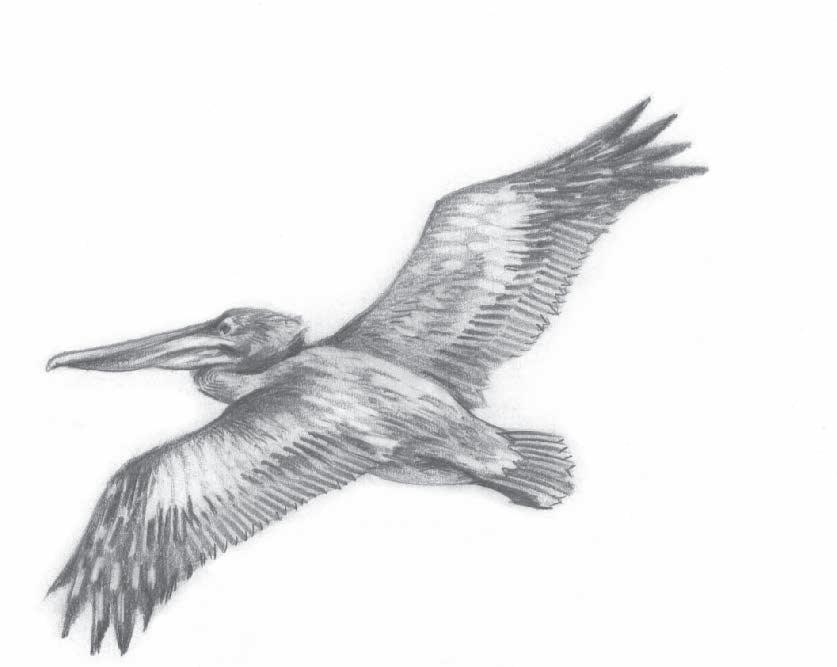
Brown pelicans are common year round, and you can find them at the beach and the ocean and around ponds, creeks, and rivers.
Brown pelicans plunge dive to capture prey. Although the brown pelican eats mostly fish, an occasional amphibian or crustacean may supplement
Brown pelicans can live a long time. The record for the longest life in the wild is forty-three years. However, only 30 percent survive the first year, and only 2 percent live longer than ten years typically.
SPECIES DESCR. SIZE A GLIMPSE MENU
LIFE CYCLE
plexippus
SPECIES DESCRRIPTION
94 LEGENDS MAGAZINE 2017 NO 28
occidentalis
Roseate Spoonbill Platalea ajaja
The roseate spoonbill is a gregarious wading bird of the ibis and spoonbill family. Adults have a bare greenish head and a white neck, back, and breast (with a tuft of pink feathers in the center when breeding), and are otherwise a deep pink. The bill is gray.

They grow twenty-eight to thirty-four inches long, with a wingspan of forty-seven to fifty-two inches, and a body mass of 2.6–4 pounds.
Uncommon, primarily seen during late summer into winter in shallow wetlands. Blue Heron Pond in the Preserve and the small tidal creek near Cassique on the Kiawah Parkway are prime spots for viewing.
BODY MASS
2.6–4 Pounds
SPECIES DESCRIPTION SIZE A GLIMPSE
LEGENDS MAGAZINE 2017 NO 28 95
 WRITTEN by TOM COYNE
WRITTEN by TOM COYNE
 A WINTER SCENE WITH TWO GENTLEMEN PLAYING COLF. HENDRICK AVERCAMP (DUTCH, 1585–1634)
— P. G. WODEHOUSE
A WINTER SCENE WITH TWO GENTLEMEN PLAYING COLF. HENDRICK AVERCAMP (DUTCH, 1585–1634)
— P. G. WODEHOUSE
More than Stonehenge, Sasquatch, and the pyramids combined, the hours and fortunes spent cracking golf’s code are unmatched. May we never solve the riddle, because it is golf’s mysteries—the allure of its punishment, the pride of its small victories, the soul-affirming tink of plastic rattling a metal cup—where we find haven for obsession, and a cause to forever chase.
Golf’s enigmatic idioms— birdie, bogie, and the word golf itself—only enrich the game’s mystery, as we bandy about a strange vernacular. But unlike our three-putts, golf’s language can be solved, and doing so is a trip through the history of a beautiful and befuddling game.
Slice. Hook. Bomb. Shank. Some golf expressions need no translation, but why is a bag carrier called a caddy? What does dormie even mean, and where did it come from? And while the etymology of basketball, baseball, and football can be discerned by a middle schooler, who decided to call small ball golf ? It seems only fitting that a game as maddening as Wodehouse’s pastime leaves us wondering at the words we use to play it.
No matter what your buddy told over post-round cocktails, golf was not born of an ancient acronym for Gentlemen Only, Ladies Forbidden. Its most likely origin, as explained by George Peper in The Story of Golf, is a guttural variation of the word colf, or kolf. Colf was a Dutch game dating to the 1200s that involved clubbing a ball over and through towns and countryside until successfully sending it
through a designated doorway, meaning the windmill hole on your miniature golf is a more genuine replica of golf’s ancestry than the Old Course. (The next time you hit a house with your drive, consider yourself an historian, not a hacker.)
Dutch paintings depict men in kilts—undoubtedly Scots— playing colf on the ice in Holland (property damage eventually pushed colfers from the towns to fields and frozen rivers, striking their balls toward poles), evidence of the Scottish connection. Scottish wool traders would return from Holland with sticks and balls and a fever for the Dutch game. They found space to play it in the dunes, on un-farmable land that had been left to hunters and shepherds—craggy links land, from the Old English hlinc, meaning hill or ridge. On undulating links courses, shaped by millennia of wind and water, the original golfers likely followed paths made playable by hungry sheep, toward rabbit warrens where bunnies’ tiny teeth had mowed the grass down to a puttable eight on the Stimpmeter (those actually didn’t come around until 1935, named for its inventor, American golfer Edward Stimpson). This is why purists will argue that links golf, à la the golf played in the British Open—breezy, treeless, with hardy beach grasses and fairways made fast and firm by a quick-draining, sandy base—is the game’s truest expression. A few hundred genuine links courses, set upon duneland, remain today— mostly in the British Isles—and stunning links-style courses like The Ocean Course at Kiawah are a chance to play golf as it was intended, in a place where land and water meet.
98 LEGENDS MAGAZINE 2017 NO 28
Golf is the Great Mystery. Like some capricious goddess, it bestows its favours with what would appear an almost fat-headed lack of method and discrimination. On every side we see big two-fisted he-men floundering round in three figures, stopping every few minutes to let through little shrimps with knock-knees and hollow cheeks, who are tearing up snappy seventy-fours.

LEGENDS MAGAZINE 2017 NO 28 99
THE MACDONALD BOYS PLAYING GOLF, BY EIGHTEENTH-CENTURY PAINTER JEREMIAH DAVISON.
GENTLEMEN GOLFERS, 1930 s FROM THE COLLECTIONS OF THE STATE LIBRARY NSW
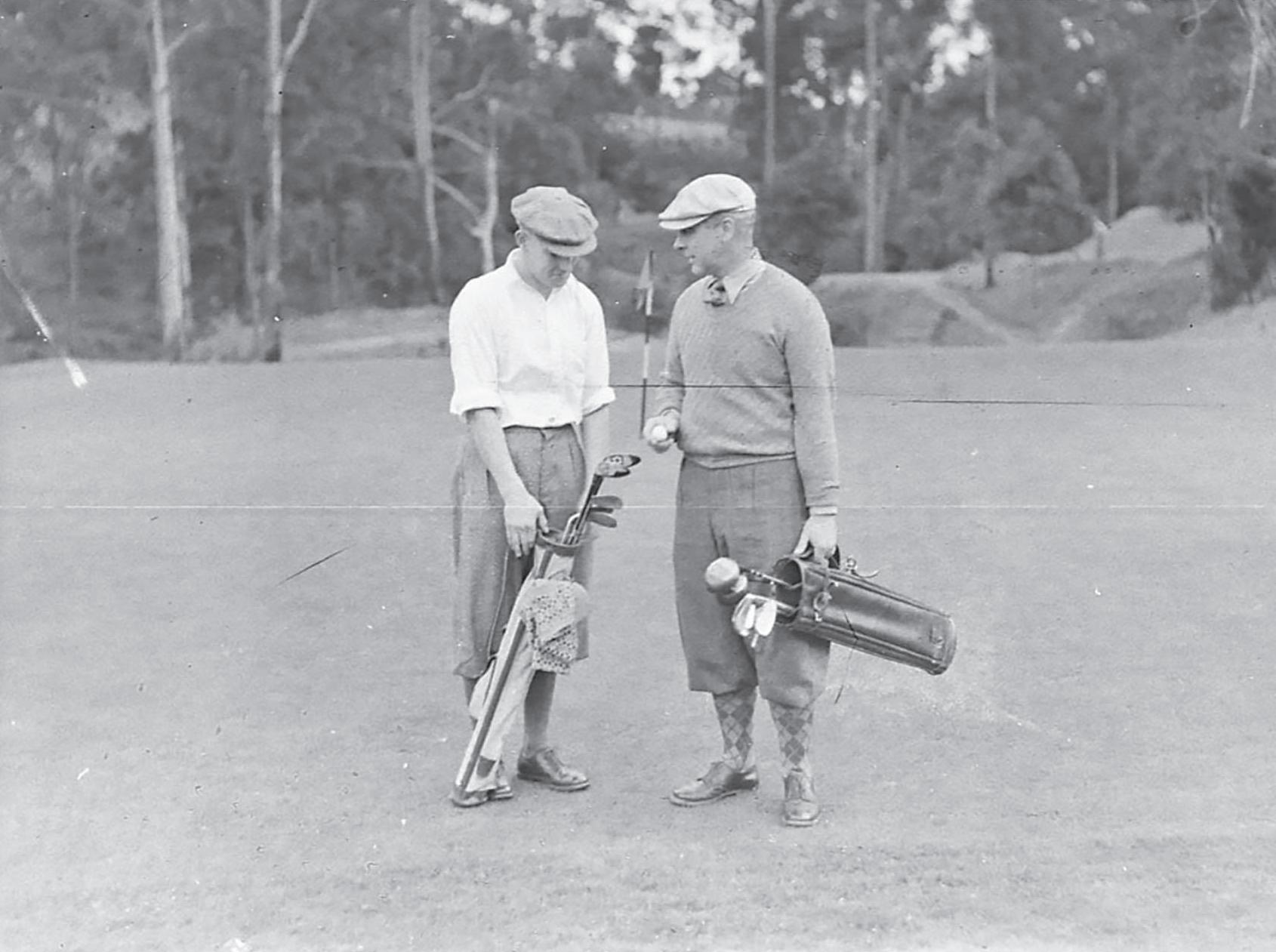
100 LEGENDS MAGAZINE 2017 NO 28

LEGENDS MAGAZINE 2017 NO 28 101
AERT VAN DER NEER, CA. 1642, WINTERLANDSCHAP MET SCHAATSERS EN KOLFSPELERS
Dutch colfers also seemed to have passed along the postround tradition of losers buy, as winning colfers took a barrel of beer off the defeated side. But the scoring verbiage of golf has its own non-Dutch origins. Birdies aren’t birdies because they sing so sweetly rather, the expression used for a score of -1 on a hole comes from turn-of-the-century American slang, where a bird was anything amazing. American golfer Abner Smith is credited with first introducing bird to golf in 1903 at Atlantic City Country Club, where a plaque commemorates him stuffing his approach and declaring, “That was a bird of shot.” Perhaps not feeling his feat had been properly rewarded, Smith suggested that any future scores of -1 on a hole pay out double the stakes. His partners one of them being George Crump, builder of famed Pine Valley agreed, and the bird, eventually birdie, became one of the most beautiful words in the English language, only outshone by eagle (-2) and albatross (-3), avian spin-offs of birdie that tagged rarer scores with rarer birds.
A less melodious golf idiom actually has a musical origin. In the late nineteenth century, the song “Hush, Hush, Hush, Here comes the Bogeyman” was a London theater hit on the tongues of British everywhere. The Bogeyman (eventually our Boogieman, and derived from the Middle English bogge for goblin) was a faceless fiend who came at night to terrorize misbehaved children. The song extolled children to “Hush, hush, hush, here comes the Bogeyman! Hide your head beneath the clothes, he’ll catch you if he can!” As children across Britain wept themselves to sleep, golfers came to adopt the notion of chasing the bogeyman as chasing an elusive allotted score on a golf course.
A 1915 story in The American Golfer magazine explains how, at the Great Yarmouth Club in England, a player who had likely been to the theater recently called his sharpshooting competitor “a regular Bogeyman,” thus bringing the lyrics of the popular song to golf. What had previously been called the ground score would become known as the bogey score, where you played to beat the tally of the invisible but low-shooting Bogeyman at golf clubs where match play was the dominant format, playing against a phantom opponent made sense as a scoring system. Bogey score would become commonly known as the Colonel Bogey score when a member from Yarmouth visited a military club in Hampshire. The gentleman cleverly
introduced his new scoring system by explaining he had brought along with him his skilled but unseen playing partner, Mr. Bogey. The members liked the idea of coming up with a score for Mr. Bogey on their course and trying to beat it, but they agreed that he must have military rank if he were to play at their club. So their guest was promoted to colonel, and soon golfers across Britain were playing to match or best the imaginary Colonel Bogey.
Thirty or so years after the advent of bogey scoring, over in America the USGA established a system to ascribe a par score to a hole based on its yardage, par deriving from the Latin for equal. Golf historian Neil Laird credits the stock market with popularizing the term in golf, where share prices were described as being above or below par. The more ambitious American par scoring reflected the advance in golfers’ abilities since Colonel Bogey’s day, so while some British courses resisted par and stuck with bogey, or offered a bogey tally for average golfers and a par score for experts, par eventually won out as the standard for an allotted score on a golf hole, stoking an already healthy British-American golf rivalry. But it wouldn’t be the end for Colonel Bogey when a British bandmaster was inspired by a whistling golfer, the “Colonel Bogey March” came to life in song. Most famous as the tune whistled in The Bridge on the River Kwai, the oftparodied march has been whistled by the likes of Homer Simpson and the cast of The Breakfast Club, and became an anthem of the British people in WWII as the tune for “Hitler Has Only Got One [Titleist].”
Perhaps by knowing the meaning of the scores we are chasing, we will find their pursuit a less mysterious endeavor, quickly getting dormie in our matches (from the French dormir, to sleep, as in you can rest you’re up enough holes and can’t lose), and not needing our caddy (also from French, le cadet meaning the youngest, borrowed by Scots as slang for an errand boy) to suggest we take a mulligan (named after Canadian David B. Mulligan, whose 1920s golf partners at the Country Club of Montréal offered him a second tee-ball when he complained his hands were numb from his rough drive to the club next time you are offered a mulligan, thank the bumpy Victoria Bridge in Quebec). But if we can’t catch the Bogeyman, at least we can talk a good game. T.C.
102 LEGENDS MAGAZINE 2017 NO 28




LEGENDS MAGAZINE 2017 NO 28 103

THE CIVIL WAR
 WRITTEN by CHRISTINA RAE BUTLER
CHARLESTON AND THE SEA ISLANDS
WRITTEN by CHRISTINA RAE BUTLER
CHARLESTON AND THE SEA ISLANDS

In December 1860, 169 state representatives met in Charleston to sign the Ordinance of Secession. Morale was high as three thousand citizens cheered the delegates. Then on April 12 of 1861 Charleston was witness to the first shots of the Civil War at Fort Sumter. Locals lined the Battery facing the harbor to cheer the Confederacy. Few Lowcountry residents could have guessed that the war would drag on for four more years, causing untold desolation to the city and plantations on the surrounding Sea Islands like Kiawah.
The Early Years
By early 1861, after several months of Union activity in the Harbor, Charlestonians knew it was a matter of time until the war would begin. Confederate General P. G. T. Beauregard sent word to Union major Robert Anderson to surrender Fort Sumter, or his troops would start firing. Anderson refused, and at 4:30 a.m. on April 12, the Confederate batteries opened fire on the Fort. By nightfall 2,500 shots and shells had been fired as spectators cheered from the Battery. At 2:30 p.m. on April 13, Anderson surrendered. Fort Sumter was now in the hands of the Confederacy and would remain so until 1865. A female Charlestonian exclaimed, “Victory was ours, and the Stars and Bars . . . floated beside the Palmetto from the battered walls of Sumter.”
Almost immediately President Lincoln called for the enlistment of seventy-five thousand troops to fight the Confederate States. Union blockade ships began patrolling the coast off of Charleston and Savannah. On November 7 a Federal fleet launched an amphibious assault and quickly took Hilton Head, Port Royal, and Beaufort. South
Carolinians were shocked that Beaufort had been taken, and many residents on the Sea Islands to the south of Charleston panicked and moved with their slaves to the interior of the state.
Charleston saw no fighting for the rest of 1861 but suffered tragedy on December 11, 1861, with the worst fire in its history. Though not a result of the Civil War, the fire caused $3.5 million in damages (an 1861 valuation) and destroyed more than five hundred buildings as it burned its way from the Cooper River westward across the city.
Fear of slave insurrection and paranoia was rampant in Charleston. Slaves continued to run across enemy lines in hopes of finding freedom and shelter with the Union troops. Bored Confederate soldiers roamed in drunk and disorderly bands around the city, vandalizing, firing their guns, and causing general mayhem. Resident William Grayson remarked, “No destruction of Lincoln’s men could be more complete and unsparing.”
But despite the catastrophic fire and heightened danger, morale was still high. Young women dined and danced with officers at seasonal balls. Local women contributed to the war effort through charitable groups and the Ladies Gunboat Society, which raised enough money to finance a ship called the Palmetto State . Lowcountry residents found purpose in the midst of the conflict. Life went on.
The War Escalates
Northern forces viewed Charleston as a hot spot and were determined to take it at all costs. In June 1862 six thousand troops launched an attack on five hundred Confederates,
LEGENDS MAGAZINE 2017 NO 28 107
Deemed the “hellhole of secession” by famed Union general William Tecumseh Sherman, South Carolina became the first state to secede from the Union.

108 LEGENDS MAGAZINE 2017 NO 28
and fighting began locally in earnest. The first Union force was unsuccessful, and leaders prepared for another assault. Beauregard commanded his men to shore up the city’s defenses by strengthening the earthen batteries and adding more guns to the “circle of fire” protecting the harbor. Union forces tried the next naval attack in April of 1863, but their nine ironclads could not breach Sumter or the city.
Skirmishes continued on James Island into 1863, and in July Union leader Quincy Gillmore stormed Battery Wagner on Morris Island with thousands of troops, including the famous black unit the 54th Massachusetts Regiment. As they invaded the islands around Charleston, other Union forces fired at Fort Sumter. A reporter in the city described the ensuing mayhem:
The good people of Charleston had been anxiously awaiting the Federal assault, which they knew to be imminent. Theirs was not an anxiety of fear . . . so thoroughly indifferent were the ladies of Charleston to any sense of danger, that an order issued by General [Beauregard] for all women and children to leave the city was in most cases disregarded. But suddenly the southern eastern parapet of Sumter is enveloped in smoke. Boom! Comes the report over the quiet waters of the bay . . . every house is pouring out its inmates, eager to witness the engagement. The bay, lately so calm and peaceful, is now like a seething cauldron . . . huge spiral columns of water leap into the air around the ironclads.
After several unsuccessful attempts to take Charleston by water, the Union launched a different tactic—shelling Charleston civilians from James and Morris Islands. Gillmore set twenty-two thousand men to work erecting gun batteries in the island marshes facing the Charleston peninsula and Fort Sumter. The batteries were five miles from the city, too distant for conventional ordnance to reach, so residents were at first unconcerned. However, recent weapon developments and rifling technology actually put the city in range, and on the night of August 22, 1863, the “Swamp Angel” gun opened fire on Charleston.
The first shell hit Hayne Street near the Market, narrowly missing the Charleston Hotel. A British visitor recalled, “At first I thought a meteor had fallen, but another awful rush and whir right over the hotel, and another explosion beyond, settled any doubts that the city was being shelled.” Beauregard admonished Gillmore: “It would appear, sir, that despairing of reducing our works, you now resort to the novel measure of turning your guns against old men, the women and children, and the hospitals of a sleeping city, an act of inexcusable barbarity.” Church steeples became targets for Union artillery, so many closed during the siege for the safety of their parishioners. Newspapers reported that many residents had made a “Grand Skedaddle,” leaving as quickly as they could pack their belongings.
Those who stayed became used to the daily explosions. Fitz Ross, a visiting journalist, wrote, “Nine out of ten shells fall harmless—the hope of the Yankees to set fire to the city or batter it down have hitherto proved disappointing.” The shelling continued with varying degrees of intensity for 587 consecutive days. In January 1864 the Charleston Mercury did report a frightening near miss: “One of the enemy’s large shells, after penetrating the roof of a dwelling, overturned a bed in which three young children were sleeping, throwing them rudely on the floor, but then strange to say, it passed without bursting, and buried itself in the foundation of the house.”
The worst bout of shelling occurred during a nine-day stretch in 1864, when over fifteen hundred shells rained down on the city. Volunteer fireman Charles Rogers wrote to his wife in June 1864 that “there was a fire downtown last week, and the Yanks dropped their shells in town like peas…I have experienced a remarkable change since my return. In fact it is a matter of much congratulation in the Starvation times. I don’t eat half as much now.”
The city established a free market and Subsistence Committee, but food was hard to come by, because the few farmers who still had produce were not willing to make the dangerous trek into shell-shocked Charleston. Mary Chesnut wrote, “Privateering has gone mad, and there is suffering, damage, and death on every side.”
LEGENDS MAGAZINE 2017 NO 28 109
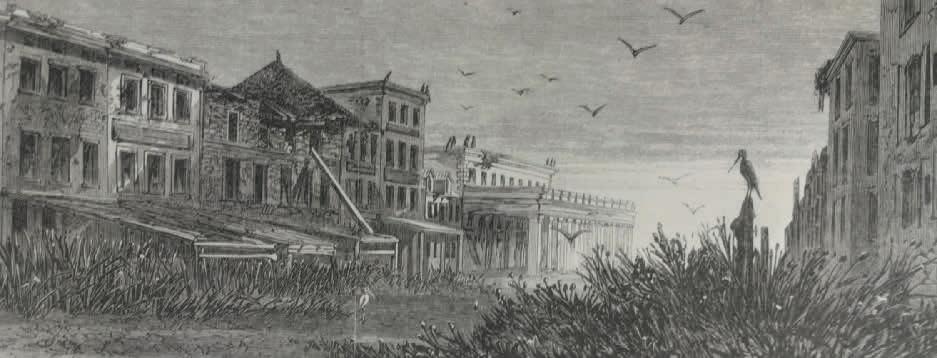
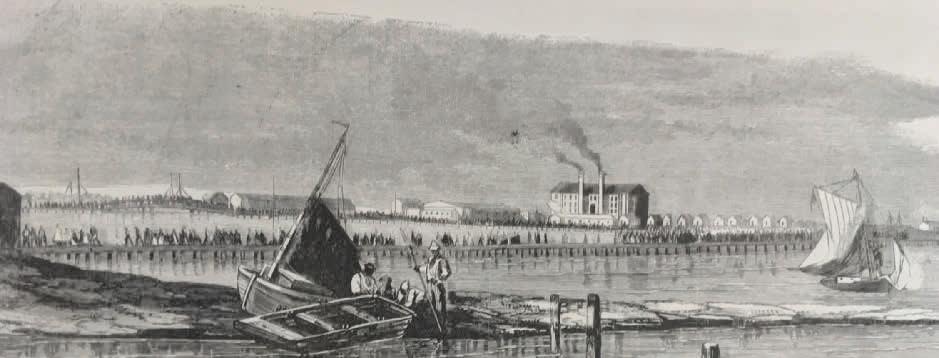

110 LEGENDS MAGAZINE 2017 NO 28
Kiawah Island
Johns, Wadmalaw, and Kiawah Islands were far enough from the Peninsula that they saw less action, but they were not untouched. In 1862 the Confederate leaders called for residents to evacuate the islands, as Union forces continued patrolling the coast. At the Vanderhorst, Seabrook, and Wilson family plantations on Kiawah, a few trusted slaves were left behind to protect the properties.
On February 8, 1863, twenty-three hundred Union troops landed on Kiawah and marched through Haulover Cut to Johns Island. Thirty-one men were killed in a short skirmish with the Confederates. In September 1863 Gillmore gave orders for his troops to “reconnoiter Kiawah Island thoroughly” and to patrol the island to prevent Confederates from building batteries near the Union bases. Union troops built rifle pits, a boat landing, and two earthen forts. Kiawah was used as a campground and base for shipping materials to the nearby Union batteries, but the island was otherwise largely deserted.
The End Draws Near
In 1864, as the attack on Charleston became more intense, the city’s services deteriorated. When General William J. Hardee took command of the southern coastal forces in October, he found many of the soldiers barefoot and poorly armed, trained, and fed. Meanwhile, General Sherman marched southward with sixty thousand trained Union soldiers.
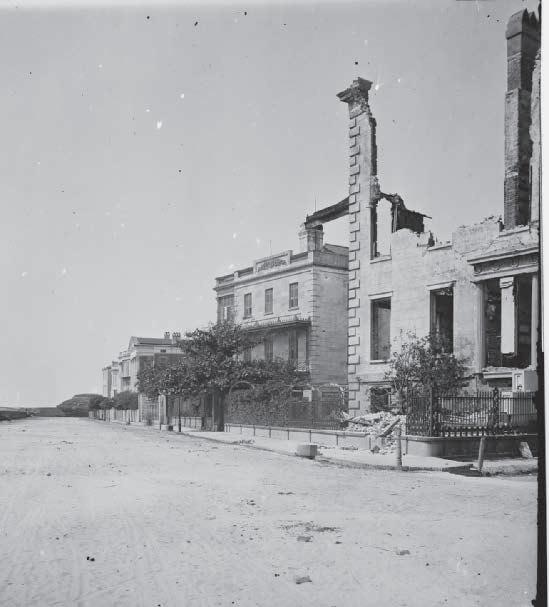
Savannah was evacuated December 21, 1864. Hardee relocated sixteen thousand troops to Charleston, believing the city would be Sherman’s next target. Despite the Union general’s hatred of the “hellhole of secession,” as he neared Charleston and left burned plantations, looting, and destruction in his wake, he decided to bypass the city, which was a “mere desolated wreck . . . hardly worth the time it would take to starve it out.” Instead, he marched to Columbia and destroyed much of the state’s capital.
Hardee decided it was no longer feasible to defend Charleston with his diminished and battered troops. His forces evacuated on the night of February 17, 1865, and in the
morning, the Union victors marched into a largely vacant city. Exultant black residents greeted them, cheering the end of slavery. A Union reporter entering Charleston described the scene: “The wharves looked as if they had been deserted for half a century. Broken down, dilapidated . . . the public buildings, we look at them and hold our breaths in utter amazement . . . all around the area of desolation are the ruined houses that still stand—Gillmore Town, as the Negroes call it.”
The war ended in May 1865, and residents, black and white alike, began the slow process of rebuilding and creating new lives in an era of profound change. William Middleton, a Charleston elite and Confederate soldier, stated, “There has been an utter topsy turveying of all of our dear institutions.” In the city, rents were high because so many properties had been destroyed or damaged by fires and shelling.
On Kiawah, despite foraging and skirmishes by both forces during the war, Vanderhorst Plantation survived with minimal damage, thanks to mulatto overseer Quash Stevens, who had guarded the house. Plantation owner Isaac Wilson was not so lucky. At his Shoolbred plantation, Confederates in retreat had “broken into the fine dwelling
LEGENDS MAGAZINE 2017 NO 28 111
Gillmore gave orders for his troops to “reconnoiter Kiawah Island thoroughly” and to patrol the island to prevent Confederates from building batteries near the Union bases.
house and maliciously destroyed the furniture, and left the house in such a condition that it scarcely ever will be habitable for a decent family.”
The Vanderhorsts took oaths of allegiance to the United States in 1865 so they would be allowed to return to their property. Arnoldus Vanderhorst’s experience was typical of Lowcountry plantation owners: He enlisted and fought in the war, then came home to a desolate plantation and bankruptcy. In 1870 the whole of Kiawah Island only generated 385 bales of cotton, a fraction of the preWar crop.
The U.S. Freedmen’s Bureau established offices throughout South Carolina to assist former slaves and to oversee labor relations between freedmen and former masters. Vanderhorst signed a contract agreeing to provide one hundred dollars a year and provisions of bacon, salt, corn, and clothing for workers who stayed at his plantation. Seven households remained, and by 1880 the plantation was turning a profit.

Federal Reconstruction continued until 1876, when South Carolina was left to its own political devices. It would take decades, or longer, to recover from the economic turmoil of the War. As the sesquicentennial of the end of the Civil War passed in 2015, South Carolinians remembered the negative aspects and positive changes resulting from the conflict. And one has only to walk along the Battery and look out to Fort Sumter to remember how fortunate it was that beautiful Charleston survived five years of war.

112 LEGENDS MAGAZINE 2017 NO 28

Enjoy part IV of a series from the diary of Blanche Brumley. Read Part I in the Fall 2015 edition of L Magazine, Part II in the 2016 edition of Legends Magazine and Part III in the Fall 2016 edition of L Magazine.


114 LEGENDS MAGAZINE 2017 NO 28

LEGENDS MAGAZINE 2017 NO 28 115

116 LEGENDS MAGAZINE 2017 NO 28

LEGENDS MAGAZINE 2017 NO 28 117
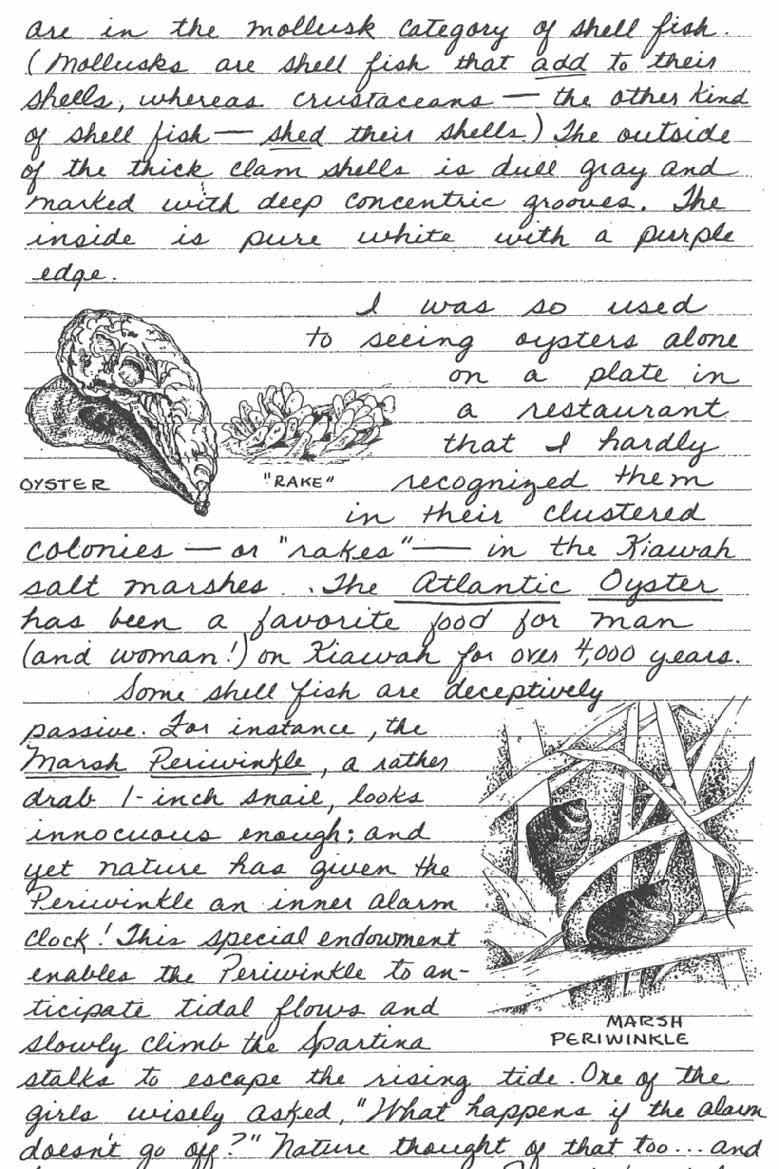
118 LEGENDS MAGAZINE 2017 NO 28
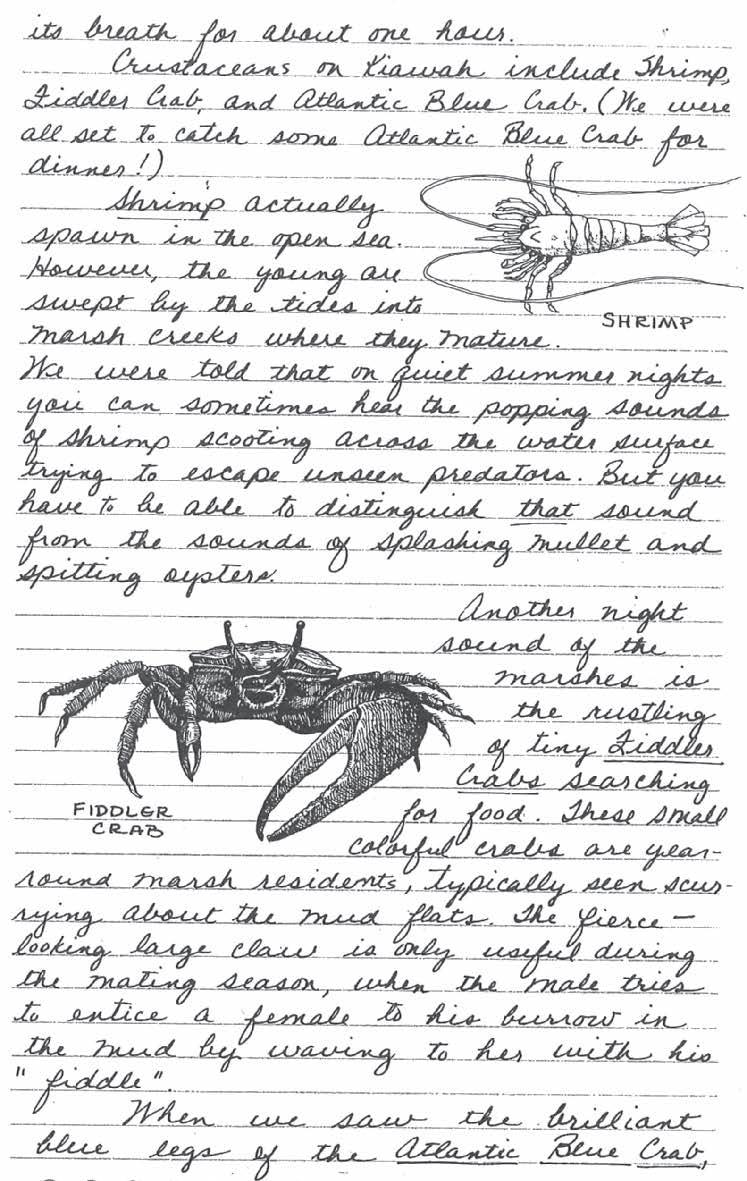
LEGENDS MAGAZINE 2017 NO 28 119

120 LEGENDS MAGAZINE 2017 NO 28

TO BE CONTINUED LEGENDS MAGAZINE 2017 NO 28 121



BECAUSE perfection MATTERS. 704.733.9566 | knightresidentialgroup.com SETTING THE STAGE FOR PICTURE PERFECT. Over 165 years of providing luxury, custom-buillt homes tailored to a lifestyle of perfection.


FergusonShowrooms .com CHARLESTON 4711 RIVERS AVE. (843) 747–6301 BLUFFTON 114 BLUFFTON RD. (843) 815–6080 ©2017 Ferguson Enterprises, Inc. 0117 330897 YOUR HOME SAYS A LOT ABOUT YOU. WE’RE HERE TO LISTEN. Your home is a reflection of you. Ferguson’s product experts are here to listen to every detail of your vision, and we’ll work alongside you and your designer, builder or remodeler to bring it to life. Our product experts will help you find the perfect products from the finest bath, kitchen and lighting brands in the world. Request an appointment with your own personal Ferguson product expert and let us discover the possibilities for your next project. Visit FergusonShowrooms.com to get started. Benchmark®

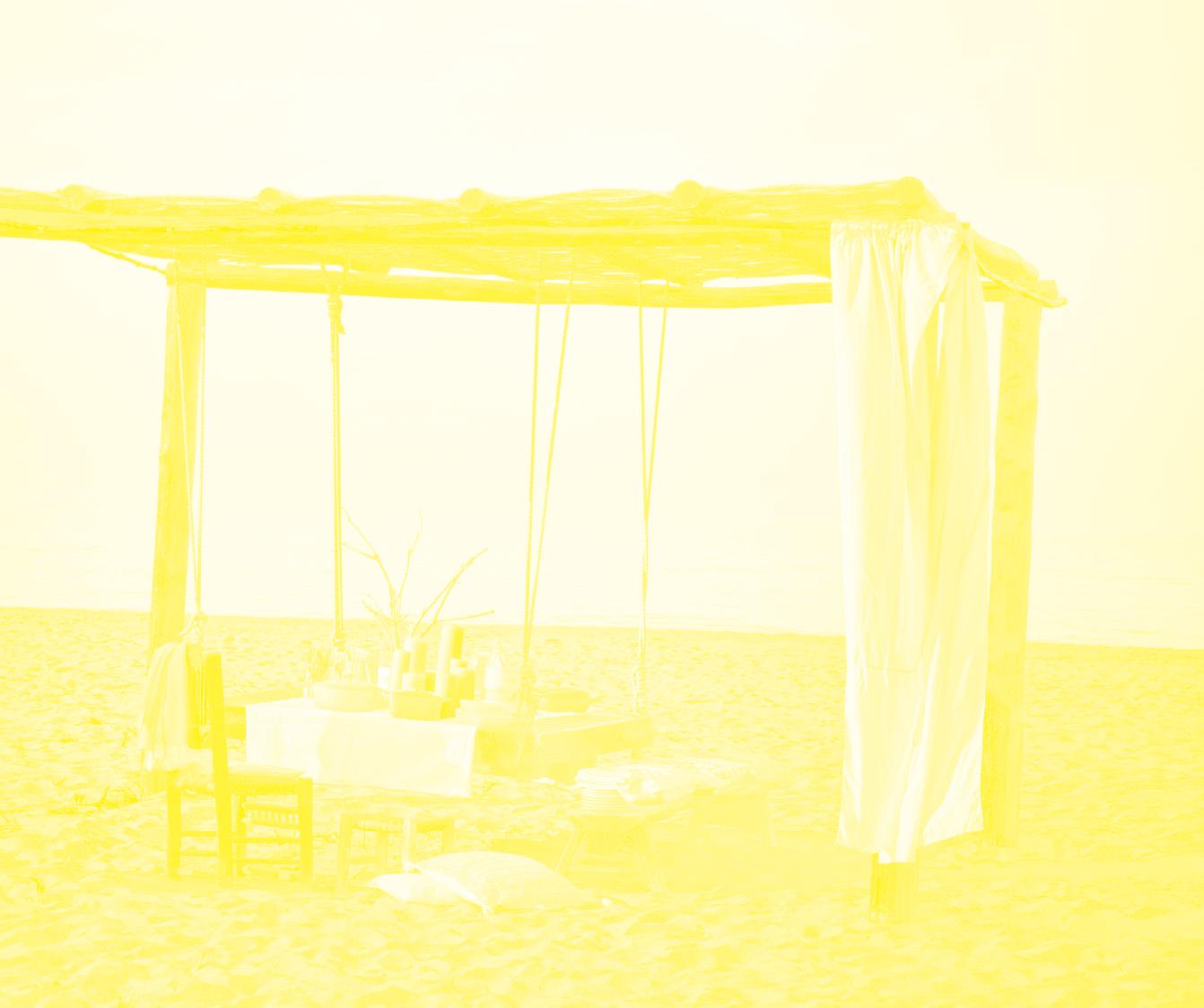

Salt air and seagrass are some of our favorite ingredients. Visit our Charleston culinary boutique inside the Planters Inn at the corner of Market and Meeting. lecreuset.com SAVOR LIFE

GOLF IMPROVEMENTS CONTINUE
AT KIAWAH ISLAND GOLF RESORT
Ever since the current owners purchased Kiawah Island Golf Resort in the mid-1990s, they have worked tirelessly to bring the caliber of golf on the Resort to the very highest level. Over the years, each course has undergone extensive work to improve the quality of the player experience.
Prior to the 2012 PGA Championship, course architect Pete Dye made numerous visits to The Ocean Course for renovations in preparation for the Championship. In 2014, Osprey Point was closed for the summer for a complete renovation approved by course architect Tom Fazio. In 2015, the work continued as Oak Point closed for a six-month renovation. Over $4.5 million in renovations were completed in 2016 on Turtle Point under the watchful eye of course architecture design team Jack Nicklaus Design. Renovations which included rebuilding green complexes; regrassing the greens, tees, and fair ways with Platinum Paspalum; rebuilding all bunkers; laser leveling all tee boxes, including the range; and reestablishing irrigation throughout the course have received rave reviews.
The work continues in 2017. Cougar Point closed at the end of last November for a ten-month renovation. It’s scheduled to reopen, completely renovated, in October 2017. Representatives from Gary Player Design Company visited the course and offered design suggestions, including:
— Regrassing the greens, tees, and fairways with Platinum Paspalum
— Laser leveling all tee boxes, including the practice range
— Rebuilding all bunkers
— Updating the irrigation throughout the golf course
In total, the owners of the Resort have invested over $13 million just in the renovation and maintenance of the Resort’s golf courses over the past few years. This does not include non-golf spending on clubhouses, restaurants, and other resort facilities. They remain steadfast in their dedication to make Kiawah Island Golf Resort the top golf destination in the nation and your favorite place to play!
LEGENDS MAGAZINE 2017 NO 28 127
DINING OPTIONS ABOUND AT KIAWAH ISLAND GOLF RESORT
THE OCEAN ROOM IN THE SANCTUARY AT KIAWAH ISLAND GOLF RESORT
The Resort’s premier restaurant, offering an unparalleled steakhouse experience featuring a variety of signature dishes.
The Ocean Room culinary team specializes in the preparation of locally sourced beef, seafood, poultry, and produce, all of which are prominently featured on the seasonally changing menu. The Ocean Room is one of only five steakhouses in the U.S. to earn both Forbes 4 Star and AAA 4 Diamond ratings, and the restaurant is committed to supporting local agriculture by writing seasonal menus based on availability of fresh produce.
Open for dinner Tuesday–Saturday, 5:30–10:00 pm.
Evening Resort Attire: Ladies—dresses, skirts, or pants paired with a dress shirt, jacket, or sweater. Gentlemen—collared shirts and slacks; jackets and ties preferred but not required. Please no flip-flops, denim, or shorts.
SUSHI LOUNGE AT THE OCEAN ROOM
The Lounge features traditional sushi dishes made with locally and regionally sourced produce and seafood. In addition to sushi, the menu includes a variety of contemporary small plates and classic cocktails. The Lounge is also equipped with a full wine menu as well as a diverse selection of craft beers and Japanese sake.
Dinner: Tuesday–Saturday, 5:30–10:00 pm
JASMINE PORCH IN THE SANCTUARY AT KIAWAH ISLAND GOLF RESORT
Walls of authentic Charleston brick, oak-plank floors, and the backdrop of the spectacular Atlantic Ocean create the ideal setting for the updated Lowcountrystyle cuisine. With a menu that highlights the abundance of Charleston’s seafood, along with certified organic local produce, Jasmine Porch will delight food lovers with its unique and refreshing approach. Dedicated to sharing the extraordinary culinary depth of the Lowcountry, the Jasmine Porch culinary team works closely with local farmers to cultivate produce that is specifically featured on seasonal menus.
Each Sunday, Islanders gather for Jasmine’s Signature Jazz Brunch, highlighted by sumptuous offerings and sweeping views of the Atlantic Ocean. This longstanding Kiawah Island tradition features a collection of seafood specialties, housemade charcuterie, and other unique chef-crafted items. Chilled Champagne mimosas and soft lively music perfectly complete your remarkable weekend experience.
Breakfast: 6:30–11:00 am; Lunch: 11:30 am–2:00 pm; Dinner: 5:30–9:00 pm; Sunday Breakfast: 6:30–10:15 am; Sunday Brunch: 11:45 am–2:00 pm
LOBBY BAR IN THE SANCTUARY AT KIAWAH ISLAND GOLF RESORT
The Island’s sophisticated gathering place! Enjoy stunning views of the Atlantic Ocean while imbibing the Island’s finest selection of beer, wine, and liquor. The exceptional personal service and elegant atmosphere are reminiscent of a forgotten time. The Lobby Bar offers nightly piano entertainment Tuesday through Saturday. During the winter months, the grand stone fireplace creates a warm and inviting haven.
Light menu offerings available from 2:00–11:00 pm.
LOGGERHEAD GRILL, POOLSIDE AT THE SANCTUARY AT KIAWAH ISLAND GOLF RESORT
Relax in the tropical ambience and enjoy gourmet Jamaican-style sandwiches, grilled burgers, salads, and wraps, plus a great selection of frozen drinks and cocktails, while overlooking The Sanctuary’s pools. Open seasonally at 11:00 am.
Use of the pools is limited to Sanctuary guests; dining is available for all.
BEACHES AND CREAM IN THE SANCTUARY AT KIAWAH ISLAND GOLF RESORT
Open seasonally, Beaches and Cream offers an Express Breakfast, served each morning at 7:00 am, which includes freshly prepared breakfast sandwiches, fresh-pressed juices, cereals, oatmeal, pastries, fresh fruits, smoothies made from scratch, yogurts, granola, coffee, tea, and espresso beverages. Express Lunch begins at 11:30 am and includes made-to-order sandwiches, paninis, and more!
TOMASSO AT TURTLE POINT CLUBHOUSE
Enjoy panoramic views of Jack Nicklaus’s Turtle Point Golf Course from the comfort of Tomasso Restaurant. Choose from the culinary staff’s Italianinspired menu, influenced by locally sourced ingredients and featuring homemade pastas, sauces, and pizzas prepared daily. Indulge in a selection from our extensive list of Italian and New World wines from Pinot Grigios to Barolos and complete your visit with a glass of our housemade Limoncello. Buon appetito!
Resort Casual Dinner: 5:00–9:00 pm
TURTLE POINT BAR & GRILLE
Visit the Bar & Grille at Turtle Point for a casual lunch or dinner, a quick bite before or after a round of golf, or cocktails anytime! A variety of dining options are available throughout the day and evening, including favorites such as our gourmet pizzas or our artisanal sandwiches prepared on our homemade country-style bread. Patio seating is available overlooking the Turtle Point Golf Course, or dine inside to watch your favorite team on one of our six flat screens.
Resort Casual
Lunch & Dinner: 11:30 am–9:00 pm
CHERRYWOOD
BBQ AND ALE HOUSE IN THE OSPREY POINT CLUBHOUSE
Enjoy genuine Southern BBQ, house-smoked over local hardwoods and complemented by Cherrywood’s signature sauces. The culinary team has something for everyone, from our hearty BBQ platters, signature sides, and unique salads to thoughtfully prepared Ale House specialties. Let the knowledgeable staff pair your meal with a special brew from our extensive beer list, featuring over sixty local, imported, draft, and craft beers. Open dining on the veranda lets diners take in sweeping fairway views and Osprey’s famous alligators.
Large parties are encouraged to call ahead. Walk-ins welcome. Resort Casual.
Lunch: 11:30 am–5:00 pm; Dinner: 5:00–9:00 pm
128 LEGENDS MAGAZINE 2017 NO 28
FINDING THAT PERFECT PLACE TO DINE HAS NEVER BEEN EASIER AT KIAWAH ISLAND GOLF RESORT. ALL TOLD, THE RESORT OFFERS EIGHTEEN DINING ESTABLISHMENTS, PROVIDING A WIDE VARIETY OF OPTIONS AND PRICE POINTS FOR EVERY TASTE AND BUDGET.
THE ATLANTIC ROOM IN THE OCEAN COURSE CLUBHOUSE
Situated directly on the coast, The Atlantic Room is Kiawah’s premier seafood restaurant, featuring modern American twists on seasonal seafood selections. With grand sweeping views of the Atlantic Ocean, the restaurant provides an unparalleled dining experience with a menu comprised of fresh seasonal ingredients, plus delicious, uncomplicated preparations with an emphasis on the freshest local seafood, procured through partnerships with local fishermen and handpicked directly at the docks on Wadmalaw Island. The Atlantic Room is a proud member of the Sustainable Seafood Initiative, which ensures the health of worldwide fisheries.
Resort Casual
Dinner: 5:30–9:00 pm
THE RYDER CUP BAR IN THE OCEAN COURSE CLUBHOUSE
Enjoy à la carte breakfast, a casual lunch with family, or a post-round sunset celebration on the veranda at this stunning oceanside bar. Take in spectacular views of the Atlantic Ocean and the final hole of one of golf’s greatest challenges: The Ocean Course. While dining, check out the course’s notorious ocean breezes on the compass rose located on the bar’s ceiling, which is attached to a rooftop weather vane. A variety of unique bar menu favorites including our Bagger Burger, signature Crispy Fried Shrimp, and the freshest oysters are offered daily.
Breakfast: 7:00–10:30 am; Lunch & Dinner: 11:00 am–9:00 pm
THE MARKET AT TOWN CENTER
Enjoy gourmet sandwiches, salads, and pizza, plus many breakfast, lunch, and dinner specials. Casual self-service dining and takeout are perfect for golf groups and families. The Market also offers grocery items, ice cream, beer and wine, cigars, newspapers, Kiawah Resort logo apparel, and gifts. Picnic baskets are also available as a fresh and flavorful alternative to your everyday meal. Please allow twenty-four-hour notice when placing your order. Pizza, menu, and market deliveries are available exclusively to guests of Kiawah Island Golf Resort.
Breakfast, Lunch, or Dinner available for dine-in or takeout from 7:00 am–9:00 pm.
NIGHT HERON POOLSIDE GRILL AND BAR
Sit back and relax at this poolside bar and grill. Night Heron Grill is the perfect family lunch spot, located in the heart of the park. Guests can enjoy a refreshing drink poolside while sampling one of Night Heron’s many menu offerings. With delicious wraps, burgers, salads, and sandwiches, The Night Heron Grill is sure to satisfy any appetite.
Open seasonally, weather permitting.
Lunch and dinner available; opens at 11:00 am.
SOUTHERN KITCHEN AT THE STRAW MARKET
The Southern Kitchen is the perfect place to start every day at Kiawah. Serving all-day breakfast, it’s great for golfers and those not-so-early risers! Enjoy classic country breakfast items, featuring specialty omelets, chicken and waffles, and praline French toast, plus lighter offerings of fresh fruit and yogurt. Enjoy Signature Champagne Cocktails and Bakon Bloody Marys from the bar. After 11:00 am, enjoy Southern Kitchen’s Lowcountry lunch favorites,
including salads, sandwiches, and specialty burgers. Dinner service is available during the summer season.
All-day breakfast beginning at 7:00 am; lunch available at 11:00 am.
WEST BEACH CAFÉ & GIFTS IN THE STRAW MARKET AT WEST BEACH
West Beach Café & Gifts is conveniently located at the Straw Market in West Beach, directly across from Kiawah’s West Beach Pool Complex. Start the day with a cappuccino or espresso paired with daily handcrafted morning pastries and out-of-town or local newspapers. Before hitting the beach or pool, stop by for some essentials such as sunscreen, towels, snacks, etc., and be sure to check out the new kids’ section with Resort logo apparel and gifts for friends back home.
Opens daily at 8:00 am. (seasonal)
WEST BEACH CANTINA
Open seasonally, weather permitting, this full-service poolside bar and grill offers a fresh spin on Mexican cuisine with an island vibe. Come to the best cantina under the sun for an ultra-relaxed paradise. The West Beach Cantina’s menu highlights flavorful dishes such as fish tacos, steak burritos, nachos, and a variety of flavored margaritas.
This pool is open to Kiawah Island Golf Resort guests and Governor’s Club members only.
Opens daily at 11:00 am.
INN SIDE SCOOP IN THE STRAW MARKET AT WEST BEACH
Inn Side Scoop, Kiawah’s old-timey ice cream shop, is located in the West Beach Straw Market. Enjoy locally made Wholly Cow ice cream, shakes, floats, sundaes, and malts. There are flavors to satisfy everyone in the family. After a visit to the West Beach Fitness Center, stop in for a post-workout protein shake, freshly made fruit smoothie, or a selection from the juice bar. A wide selection of locally baked sweets, treats, and novelty candy are also available. Open seasonally; hours vary depending on time of year.
HAULOVER CREEK BAR AND GRILL IN THE OAK POINT CLUBHOUSE
Thus full-service bar and grill serves traditional clubhouse fare, including burgers, hot dogs, sandwiches, wings, etc., and overlooks the historic Haulover Creek and the Kiawah River. The Grill is open from March through November. Snack shop fare is available during the winter season.
Opens daily at 11:00 am.
MINGO POINT OYSTER ROAST AND BBQ
A Lowcountry family tradition! Whether a returning guest or a first-time visitor, everyone loves the Resort’s most popular and longest-running event. Enjoy freshly roasted oysters, Southern BBQ specialties like ribs, pulled pork, smoked chicken, and grilled steaks, plus a bounty of sides, salads, and desserts served at Mingo Point on the banks of the Kiawah River.
Easter week; Memorial Day weekend; every Monday during the months of June, July, and August; Labor Day weekend; and Thanksgiving week; 6:00–9:00 pm
LEGENDS MAGAZINE 2017 NO 28 129




Remodeler of the year 2016 Remodeler of the Year 3x • SC State Pinnacle Remodeling awards 5x • Local Prism Awards 8x for Remodeling (843) 452-6980 | steinrenovationanddesigngroup.com
Interior Design by Terry Lowdermilk




5 GOLF COURSES • 3 POOL COMPLEXES • SPA • 10-MILE BEACH • TENNIS • VILLAS • THE SANCTUARY Proud Host of the 2021 PGA Championship Win THE TRIP OF A LIFETIME! Enter Today at TheOneKiawah.com .. • kiawahgolf.com

LOWCOUNTRY plantations
 PHOTOGRAPHY by OLIVIA RAE JAMES
PHOTOGRAPHY by OLIVIA RAE JAMES



134 LEGENDS MAGAZINE 2017 NO 28
Middleton Place
Since 1741
4300 ASHLEY RIVER ROAD, CHARLESTON, SC
OPEN DAILY | 9AM TO 5PM 110 ACRES
Throughout Lowcountry history, the Middleton family has occupied a prominent place in politics and commerce. Henry Middleton (1717–1784), a wealthy planter with plantations throughout South Carolina, established Middleton Place as his family seat in 1741. Politically active, he served as president of the First Continental Congress. His son, Arthur Middleton (1742–1787), signed the Declaration of Independence. Arthur’s son, Henry Middleton (1770–1846), served as governor of South Carolina and as President Monroe’s minister to Russia. Henry’s son, Williams Middleton (1809–1883), supported the Confederacy and signed the South Carolina Ordinance of Secession.
Just months prior to the end of the Civil War, Union soldiers burned all the structures on the property. Only the South Flanker, built as gentlemen’s quarters, could be restored, and beginning in 1870 it served later generations of Middletons as their family home. A House Museum since 1975, it contains furnishings, fine English silver, and highquality artwork owned by generations of Middletons. Home to the oldest landscaped gardens in America, Middleton Place was designated a National Historic Landmark in 1971.
In 1974 the Middleton family transferred ownership of the property to the Middleton Place Foundation, a nonprofit educational trust committed to research and interpretation of the lives lead by early Middletons and the enslaved people who sustained them.
LEGENDS MAGAZINE 2017 NO 28 135
Middleton Place is home to the oldest landscaped gardens in America.
Boone Hall Plantation
Since 1681
1235 LONG POINT ROAD, MT PLEASANT, SC
OPEN MONDAY THROUGH SATURDAY | 9AM TO 5PM
OPEN SUNDAY | 12PM TO 5PM
738 ACRES
Boone Hall is an antebellum-era plantation situated on Wampacheeoone Creek, ten miles north of Charleston. The plantation includes seasonal crop fields, naturally preserved wetlands, creeks, and ponds. The earliest known reference to the land is of 1681, in a grant of 470 acres from owner Theophilus Patey, to his daughter Elizabeth and her new husband, Major John Boone. The couple built a wooden two-story frame house by 1790. An expansive Colonial Revival plantation house (completed in 1936 by Canadian Thomas Stone) stands on the original home site. Stone also reinvigorated the pecan farming operation at the plantation, focusing on about two hundred acres of what had been a seven hundred-acre pecan farm. The site includes nine original slave cabins dating back to the late 1700s, which were occupied by sharecroppers well into the twentieth century. An historic and much-publicized avenue of oaks, originally planted in 1743, leads up to the current mansion.
The plantation is listed on the National Register of Historic Places and was named one of the African American Historic Places in South Carolina.


136 LEGENDS MAGAZINE 2017 NO 28


Drayton Hall
Since 1738
3380 ASHLEY RIVER ROAD, CHARLESTON, SC
OPEN MONDAY THROUGH SATURDAY | 9AM TO 5PM | OPEN SUNDAY | 11AM TO 5PM 630 ACRES
This eighteenth-century Colonial mansion is a prime example of Palladian architecture in North America, and it’s the only remaining plantation house on the Ashley River to survive both the Revolutionary and Civil Wars. John Drayton (born at nearby Magnolia Plantation) bought the property in the late 1730s and made it a showplace for the wealth being generated on his outlying properties, totaling almost 76,000 acres. In his lifetime, Drayton rose in power to become a member of the Royal Governor’s Council. His sons were educated as English gentlemen, and the mansion was once surrounded by Englishstyle gardens. Although the two brick flanker buildings and connecting colonnades no longer stand, the seven generations of Drayton heirs have preserved the house in nearly original condition. A Palladian-style, double-projecting portico graces its west façade, a central stair hall with a symmetrical staircase climbs above a large hall, and the plasterwork in several of the rooms of the main floor is richly detailed.
Drayton Hall was declared a National Historic Landmark in 1960, and the South Carolina Department of Archives and History claims that Drayton Hall is “without question one of the finest of all surviving plantation houses in America.”
LEGENDS MAGAZINE 2017 NO 28 139
In his lifetime, Drayton rose in power to become a member of the Royal Governor’s Council
McLeod Plantation

Since 1851
325 COUNTRY CLUB DRIVE, CHARLESTON, SC
OPEN TUESDAY THROUGH SUNDAY | 9AM TO 4PM
37 ACRES
Purchased in 1851 by William Wallace McLeod, the plantation house was constructed in 1854. During the Civil War, the 1,693-acre Sea Island cotton plantation was headquarters for Confederate units, including, briefly, the commander of all James Island troops. After Charleston surrendered, the allblack 55th Massachusetts Volunteer Regiment occupied the plantation. The home became the Freedmen’s Bureau James Island field office. A school was established, and food and medical rations were distributed. In addition, forty-four freed people subdivided and obtained legal ownership of the land. By 1870 all forty-four landowners had lost ownership, and the plantation was returned to the McLeods.
The Greek Revival vernacular house, popular among working plantations, was renovated in the 1920s and ’30s. The back of the house was converted to the front with the addition of three-story-tall Doric columns. Remaining structures include former homes for enslaved people, a detached kitchen, a dairy building, a cotton gin house, a livestock barn, and a cellar. The plantation, designated a South Carolina African American Historic Place, is part of the Gullah Geechee Cultural Heritage Corridor, which was created to recognize the important cultural and historical contributions of the African Americans known as the Gullah Geechee. Today McLeod Plantation Historic Site interprets the experiences of former residents during the struggle for social and economic justice from 1851 to 1990.
140 LEGENDS MAGAZINE 2017 NO 28


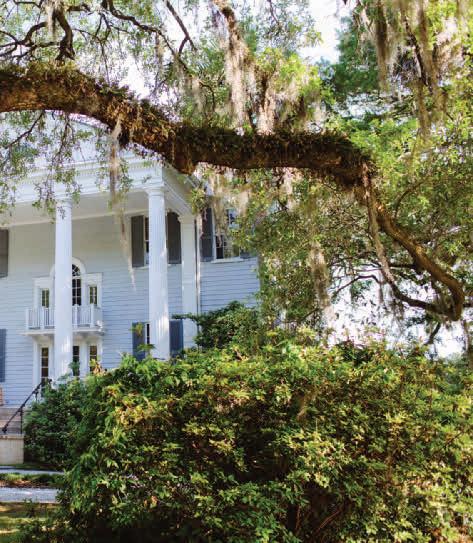
LEGENDS MAGAZINE 2017 NO 28 141

142 LEGENDS MAGAZINE 2017 NO 28
Magnolia Plantation and Gardens


Since 1676
3550 ASHLEY RIVER ROAD, CHARLESTON, SC
OPEN DAILY | 8:30AM TO 4:30PM
646 ACRES
Magnolia Plantation is one of the oldest plantations in the South, with the original structures dating back to 1676. The historic Drayton Hall was built in 1738 by John Drayton, and the tract was a working rice plantation, with extensive dams and dikes built in fields along the river for irrigation. Magnolia became known for its gardens after the Reverend John Grimké Drayton inherited the property in the 1840s. An Episcopal minister, Drayton restructured the gardens in an English style and was perhaps the first to introduce azaleas to America. Under his supervision, the gardens of Magnolia on the Ashley River became well known in the antebellum period for their azaleas and live oak trees. They were photographed by Mathew Brady, who would later become famous for his photographs of the American Civil War. John James Audubon, for whom Magnolia’s Audubon Swamp Garden is named, was also a visitor to the plantation.
The house was burned during the Civil War, and the five slave cabins have been restored to reflect different historical periods, from 1850 into the twentieth century. The plantation still remains under the control of the Drayton family after fifteen generations. It was named by Travel + Leisure magazine as one of “America’s Most Beautiful Gardens” and is listed on the National Register of Historic Places.
LEGENDS MAGAZINE 2017 NO 28 143
TASTING ART
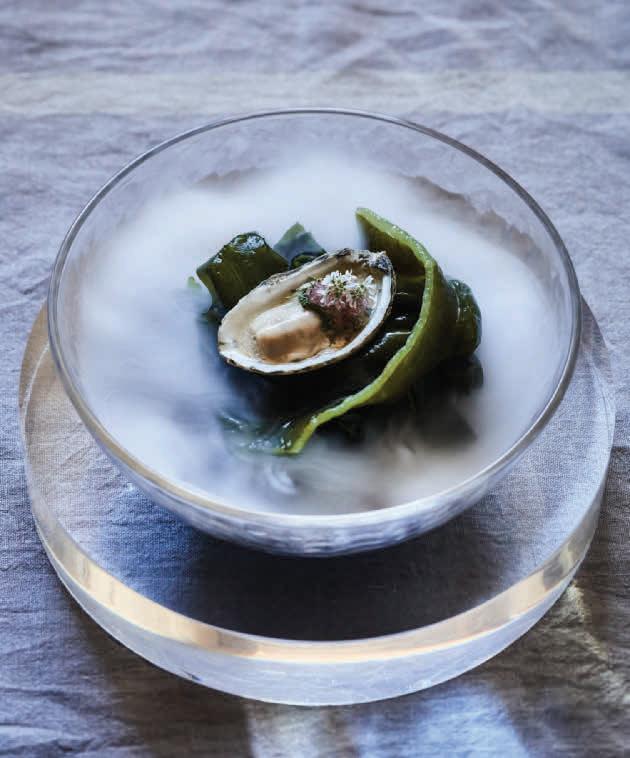
144 LEGENDS MAGAZINE 2017 NO 28
WRITTEN by SANDY LANG
PHOTOGRAPHS by PETER FRANK EDWARDS

CONSIDER THE COBIA. THE FIRM, WHITE FLESH OF A SEA FISH SLICED INTO SHARPLY ANGLED PIECES, EACH ONE POACHED, SEARED, OR GRILLED, AND ARRANGED HINGE-LIKE ON THE WHITE GLAZE OF A PLATE.
Then, tableside, a sauce is slowly eased from a small pitcher, pooling into a kaleidoscope swirl of liquefied lovage (the green) and green peanuts (the white).
Or check out the nasturtium petals on another singular dish, a precious crown of floral confetti, a tiny bouquet that tops a scoop of melty-tender, ultra-aromatic Anson Mills rice.
This is McCrady’s in its latest, most intimate incarnation (just twenty-two seats), where Chef Sean Brock again has a knack for shining the light on an ingredient that we might have forgotten about, or never heard of at all.
“It’s the acid-trip, spider-webby, Pink Floyd course,” Brock says, smiling, of the psychedelic visual effect of that white-and-green cobia dish.
As part of the tasting-menu format for McCrady’s, dishes are served in a spare, elegant space with a central, U-shaped counter that glows from below. A private entrance largely screens the views of passersby on East Bay Street, and the chef and his team who happen to be all men on this day cook food and prepare plates in a glimmering cave of silvery glass tile and stainless steel at the room’s far end, while a soundtrack chosen by the chef rocks gently (mostly) through the sound system, including:
The Shins
Beck
Smashing Pumpkins
Radiohead
Broken Bells
The Black Angels
146 LEGENDS MAGAZINE 2017 NO 28






LEGENDS MAGAZINE 2017 NO 28 147


While the music plays, Brock riffs on food. And somewhere between talk of Mississippi folk art painters and a 1959 double-necked guitar that he just added to his burgeoning personal collection, the chef shares the backstory of the “foiechamacallit.” It’s his concoction of foie gras and crunchy, puffed Carolina Gold rice in a rectangle of chocolate that looks almost like something in a Whitman’s Sampler box. Creating the recipe became a passion project for the chef after a stop at a gas station late one night in the ACE Basin when he made an impulse buy of a Whatchamacallit candy bar. “I always thought about making one of those with foie gras,” he explains. “We just had to figure out how to do it.”
Brock thrives on such a challenge, including thinking about exact temperatures for melting, how and what fermentation can do, and all manner of chemical and physical changes that affect taste, texture, and deliciousness plus, how the food looks on the plate. He’s known for the beauty of his food.
But it took the observations of others to suggest that his plating aesthetic might have real artistic merit like the time a modern art aficionado pointed out that an octopus dish Brock had just plated had an uncanny resemblance to a painting by the Barcelona-born artist Joan Miró. “Until then, I wasn’t aware,” Brock says. “It blew my mind.”
As afternoon rolls into evening in the McCrady’s kitchen, a solitary oyster, just shucked and glistening, is about to be placed on a countertop charcoal grill that’s no bigger than a
shoe box. Brock peels open a marble-sized calamondin and tastes the winter citrus grown on James Island that will add orange zest to the night’s frozen “sea island milk” course. Upstairs, above McCrady’s Tavern and not far from the thirdfloor rooftop garden overlooking Unity Alley, vacuum-packed bags of shrimp and fish are stored after being sun-dried until shriveled to a fraction of their original size. The shrunken versions have intense, condensed smells of fish and ocean and will be sliced or crushed into powder to be added to recipes for flavoring. It’s a technique Brock experienced on a visit to West Africa to learn of food cultures and to look for connections to the Lowcountry. More recently, Brock’s been on a few forays to Japan, and he returned with even more inspiration and ideas. Everywhere he travels now, he says, he tries to visit not only local food markets and restaurants but also art galleries and museums. Like food and flavor, the visual arts are another window to the people and culture of a place, and he’s curious about all of it.
That includes a recent show at the Gibbes Museum of Art downtown that featured works by Vasily Kandinsky. The Russian artist’s paintings have become a favorite of Brock’s and often include an array of triangles, ovals, straight and squiggly lines. The modern works can appear both geometric and free-form, and sometimes, when looking at such a painting, it’s not much of a stretch to imagine a visual connection to the food world.
Just consider the cobia. — S.L.
150 LEGENDS MAGAZINE 2017 NO 28
AS AFTERNOON ROLLS INTO EVENING IN THE MCCRADY’S KITCHEN, A SOLITARY OYSTER, JUST SHUCKED AND GLISTENING, IS ABOUT TO BE PLACED ON A COUNTERTOP CHARCOAL GRILL THAT’S NO BIGGER THAN A SHOE BOX.
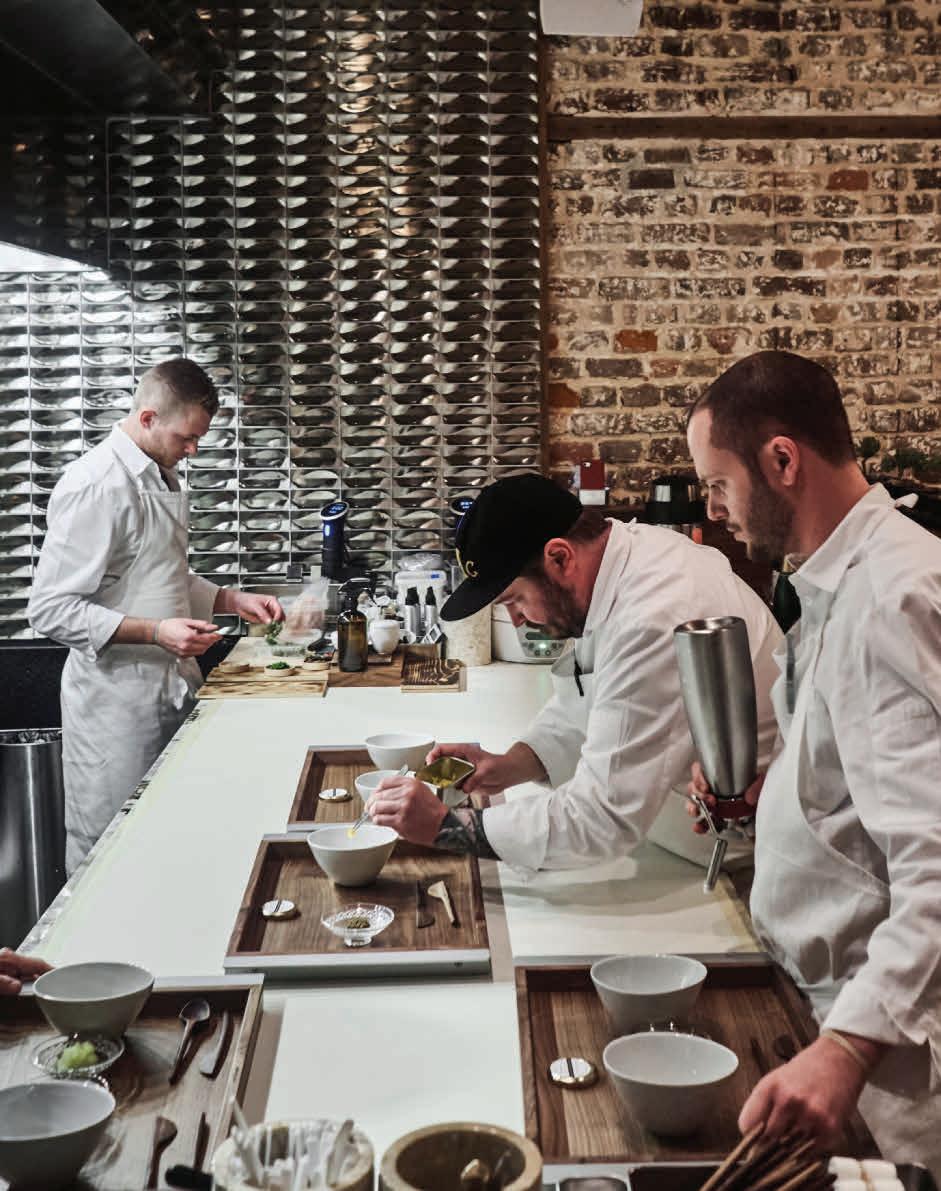
LEGENDS MAGAZINE 2017 NO 28 151

GOOD FRIENDS Of
the Lowcountry
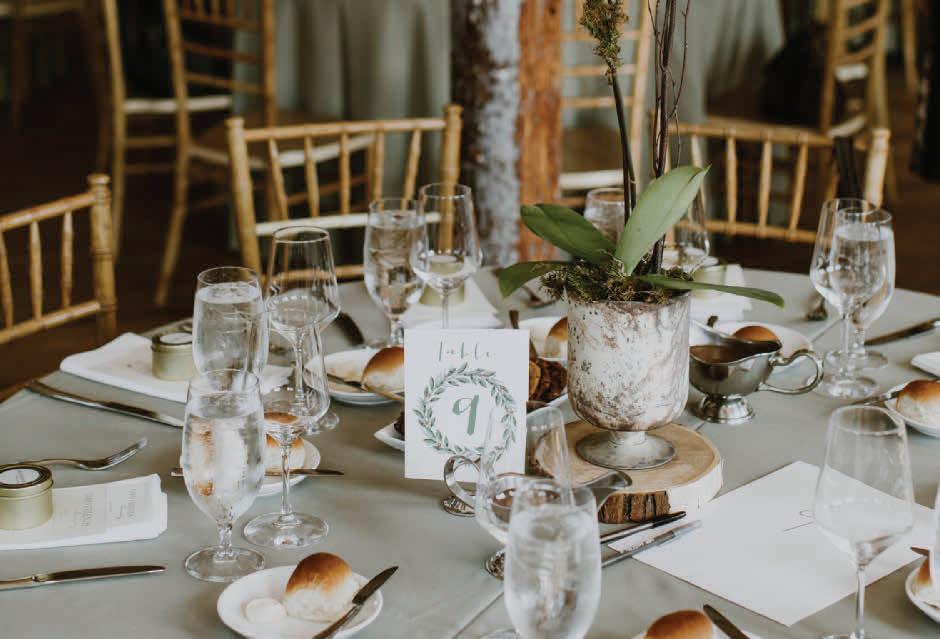
LEGENDS MAGAZINE 2017 NO 28 153 GOOD WORKS
PHOTOGRAPHY BY MELISSA TOMS
Good Friends of the Lowcountry just commenced its second year of giving. On December 1, nearly 280 women gathered for a one-hour luncheon to fundraise, providing the nonprofit with nearly $60,000 for their annual budget. This money is funnelled directly into the Lowcountry community, to fill distinct, one-time needs.
The first Good Friends organization started in Charlotte. The local, female-based group has raised over $3 million, and it just celebrated its thirty-year anniversary this past December. What began as a small group of thirty women has grown to nearly two thousand members in the Charlotte branch alone. From the Charlotte model, several Good Friends organizations have organized in cities throughout the Carolinas.
The concept is simple. Good Friends donors meet once a year and give as much or as little as they want. Throughout the year, social workers and case managers from My Sister’s House or MUSC to name a few connect the organization with specific, individual needs. For example, Good Friends of the Lowcountry will pay garage parking fees for a cancer patient who can’t afford to park for weekly chemotherapy sessions. The organization will pay to repair the car of a working nurse who supports five children. Good Friends will
pay for an individual’s utility bills during tough times, for a patient’s unforeseen prescription costs, and even for a young woman’s dress to wear to a school ceremony.
“We give a lot of one-off assistance that normal 501(c) (3)s [nonprofits] can’t do. We fill very specific voids,” says board member Megan Phillips. “We really want to give where it makes the most impact.”
The organization is an incredible tool for social workers to employ when someone needs one-time financial assistance. So often, a single unforeseen cost can break a tenuous existence. Applications are submitted from the vast network of case workers in the Lowcountry and reviewed by a distribution coordinator.
The organization started small. With no budget for advertising, community involvement grew by word of mouth, friends invited friends. “It truly is grassroots growth,” says Phillips. “Every penny that’s raised goes back to the Lowcountry community.” And though the inspiration came from Charlotte, Good Friends of the Lowcountry is an entirely distinct nonprofit organization all funds stay local.
“The beauty of it is that it’s so simple,” says Phillips. “You go to one lunch, an hour a year. It’s an hour of time for a year of giving.”
154 LEGENDS MAGAZINE 2017 NO 28 GOOD WORKS
“ We really want to give where it makes the most impact.”




5 GOLF COURSES • 3 POOL C OMPLEXES • SPA • 10-MILE BEA CH • TENNIS • VILLA S • THE SANCTUARY Proud Host of the 2021 PGA Championship Win THE TRIP OF A LIFETIME! Enter Today at TheOneKiawah.com .. • kiawahdining.com



photography by Newport 653






















it comes to financing your future, you want solutions that are as unique as you. Which is exactly what your local Regions Wealth Advisor can provide. Backed by a team of credit specialists, your advisor can help you with everything from simple home equity loans to complex life insurance premium financing programs that meet your specific goals.* Ready to take your next step? Contact your local Regions Wealth Advisor for a personal consultation. Regions can also help you with the following: You’re unique. Just like our wealth solutions. Regions offers customized, world-class lending advice right in your neighborhood. *Investment, Insurance and Annuity Products: Are Not FDIC Insured | Are Not a Deposit | May Go Down in Value Are Not Bank Guaranteed | Are Not Insured by Any Government Agency Are Not a Condition of Any Banking Activity Blair Thompson VP, Wealth Advisor 704.575.1148 blair.thompson@regions.com © 2017 Regions Bank. Only deposit products are FDIC insured. Insurance products are offered through Regions Insurance, Inc., and Regions Investment Services, Inc., affiliates of Regions Bank. The purchase of insurance products through an affiliate is completely optional. Neither the purchase of insurance products through the bank or any of its affiliates, nor the agreement not to obtain, or a prohibition on the consumer from obtaining insurance products through an unaffiliated entity will affect any application for credit or the terms of any existing credit agreement with Regions Bank. I Regions and the Regions logo are registered trademarks of Regions Bank. The LifeGreen color is a trademark of Regions Bank. • Construction to perm and lot financing • Securities based lending • Investment real estate • Trust services • Home equity lines of credit • Custom retirement and estate planning
When



WELCOME TO YOUR HEALTHCARE HOME
For generations, Roper St. Francis has been trusted with our community’s health because we believe that every moment of care is life-changing and that nothing matters more than moments with the people you love.


Whether you need medical care while on vacation or a healthcare home, it’s easy to find a Roper St. Francis doctor or one of our services. For


a doctor referral, call 402-CARE.
843.552.6000 7475 Peppermill Pkwy. N. Charleston bluehaven.com Free brochure, in-home estimate & custom 3-D design DESIGN CENTER & 3 DISPLAY POOLS Custom, state-of-the-art pools & spas Lic. #G116057
www.rsfh.com
YOUR BRIDGE TO THE GLOBAL MARKET

Lawyers in our Charleston office have provided trusted legal counsel to local, national, and multinational companies for decades. Backed by more than 2,000 lawyers in 46 fully integrated offices across five continents, our Charleston lawyers offer unparalleled depth and breadth of experience to businesses and the people who own and manage them.
K&L Gates LLP. Global legal counsel across five continents. Learn more at klgates.com
Matt Norton, Partner 134 Meeting Street, Suite 500 Charleston, South Carolina
Anchorage Austin Beijing Berlin Boston Brisbane Brussels Charleston Charlotte Chicago Dallas Doha Dubai FortWorth Frankfurt Harrisburg HongKong Houston London LosAngeles Melbourne Miami Milan Munich Newark NewYork OrangeCounty PaloAlto Paris Perth Pittsburgh Portland Raleigh ResearchTrianglePark SanFrancisco SãoPaulo Seattle Seoul Shanghai Singapore Sydney Taipei Tokyo Warsaw Washington,D.C. Wilmington




CHARLOTTE KIAWAH CHARLESTON CHARLOTTELUCASDESIGN.COM 980.859.7499






Obtain the Property Report required by Federal law and read it before signing anything. No Federal agency has judged the merits or value, if any, of this property. Void where prohibited by law. An offering statement has been filed with the Department of State of the State of New York. A copy of the offering statement is available, upon request, from the subdivider. The filing of the verified statement and offering statement with the Department of State of the State of New York does not constitute approval of the sale or lease or offer for sale or lease by the Department of State or any officer thereof, or that the Department of State has in any way passed upon the merits of such offering. This project is registered with the New Jersey Real Estate Commission. Registration does not constitute an endorsement of the merits or value of the project. Obtain and read the NJ Public Offering Statement and read it before signing anything. (NJ Reg #89/15-175). AN AFFILIATE OF KIAWAH PARTNERS TOP 10 PLACES TO BUY A SECOND HOME - Barrons, 2016 | KiawahIsland.com BECAUSE TOMORROW HAPPENS IN THE BLINK OF AN EYE

ON AND ABOUT
KIAWAH
Throughout the year, Kiawah hosts dozens of soirees, outings, and activities. 2016 was fantastic. Take a look!






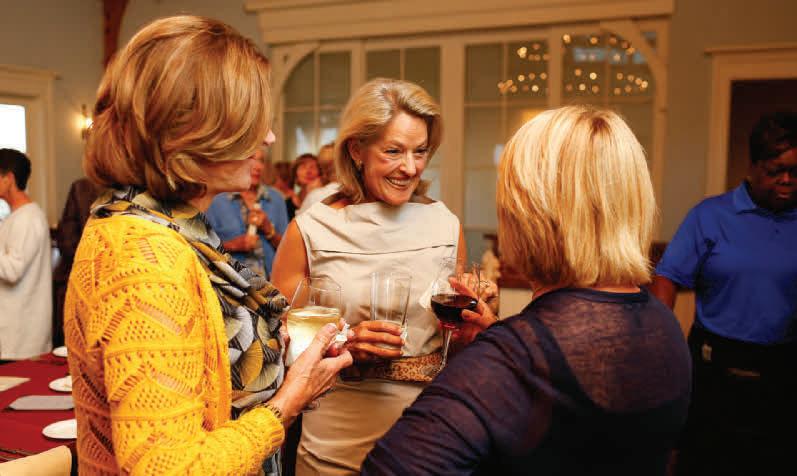
WOMEN’S PAIRING PARTY MEMBER GUEST CASSIQUE MEN’S MEMBER GUEST LABOR DAY POOLSIDE PARTY TOM’S BACKYARD GRILL LABOR DAY POOLSIDE PARTY



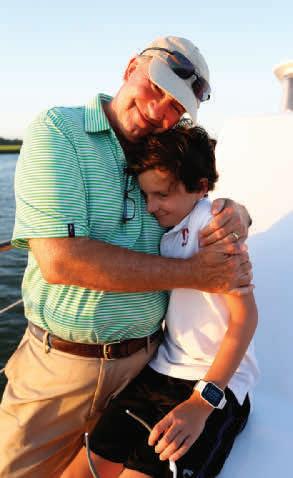
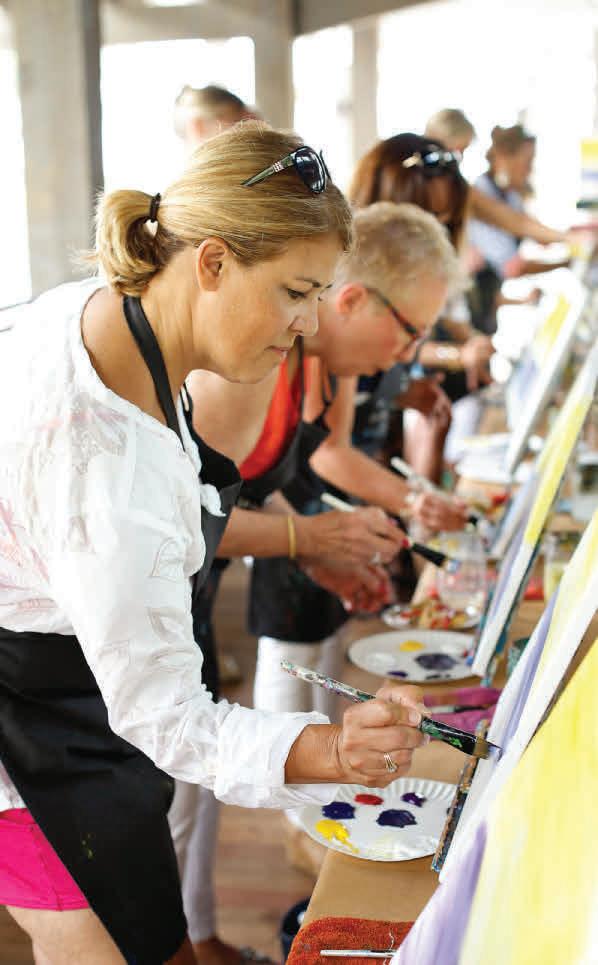
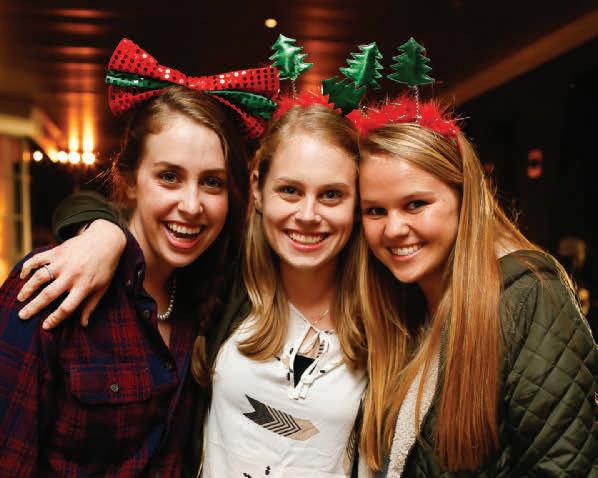

MEMBER GUEST WINE AND DESIGN LABOR DAY POOLSIDE PARTY HARVEST CARNIVAL SUNSET AND COCKTAIL CRUISE LABOR DAY POOLSIDE PARTY NOVEMBERFEST TURKEY TROT
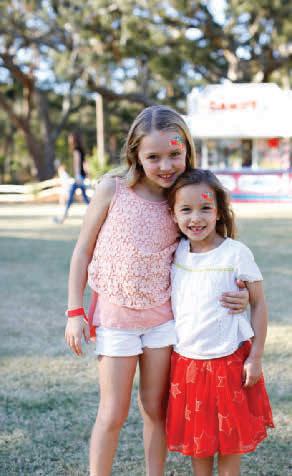





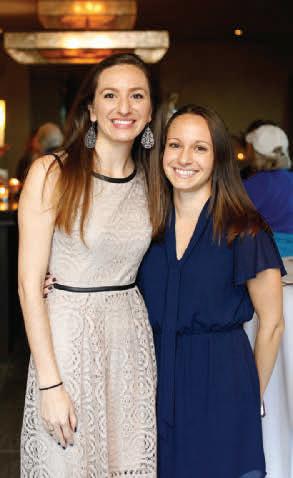
LABOR DAY POOLSIDE PARTY SASANQUA EVENT MEMBER GUEST CASSIQUE
MEMBER GUEST CASSIQUE
LABOR DAY POOLSIDE PARTY
HARVEST CARNIVAL
PRESIDENT’S CUP
HARVEST CARNIVAL


MURDER MYSTERY DINNER


MEMBER MINGLE

KITCHEN TAKEOVER

TURKEY TROT
TURKEY TROT






MEMBER GUEST CASSIQUE TURKEY TROT
MEMBER GUEST SUNSET AND COCKTAIL CRUISE
MEMBER MEMBER
WOMEN’S PAIRING PARTY



THANK YOU TO OUR SPONSORS PARTY IN THE PARK SERVICING THE PERSONAL INSURANCE NEEDS FOR COASTAL PROPERTY OWNERS. HOME • FLOOD • AUTO • YACHT • COLLECTIONS • LIABILITY Multi-Generational Families • Multi-Resident Programs KIAWAH ISLAND 660 Freshfields Drive | CHARLESTON 1 Carriage Lane | CHARLOTTE 132 N. McDowell Street Located in the BizHub at Freshfields SETH COLLINS 843.696.6898 CAMERON McCUTCHEON 843.768.8018 seth@hoodhargett.com | cameron@hoodhargett.com HOODHARGETT.COM Offering long-term relationships with in-person annual reviews, sound advice, and solutions .
The Southeastern Wildlife Exposition has been embracing art and the sporting life for 35 years. As a time tested tradition for art collectors, wildlife enthusiasts and generations of loyal attendees, SEWE honors the beauty of both wildlife and nature. Join us for another anticipated edition, where we'll gather the best in show - from world-renowned artists, sculptors and exhibitors to wildly popular entertainers and animal experts.
Celebrate the art of tradition this February and welcome SEWE's heritage into your home.


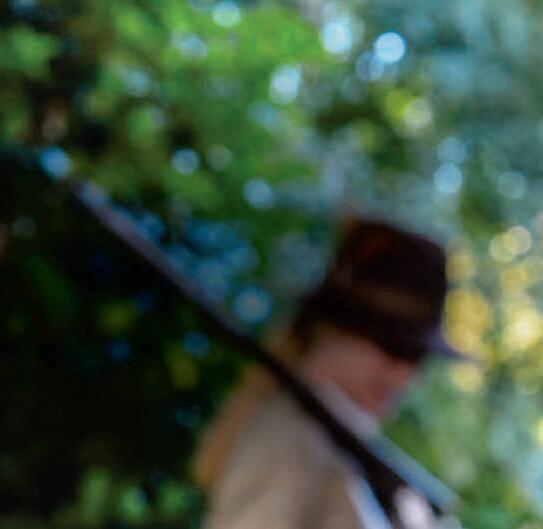










KL How long have you worked for the Kiawah Island Club?
IG I’ve been with this company for twenty-one years. Since 1994.
KL So you’ve really been here since the beginning!
IG Yes. I opened each clubhouse.
KL So explain your job.
IG I’m a food and beverage manager. I started off as a server’s assistant. Then I worked in the snack bar, and then the locker room. Now my job is more management. I’ve done weddings from day one. . . I’d say maybe fifteen or sixteen years that I’ve been doing banquets here. So I’ve done a little bit of everything.

KL Sounds like you make sure everything runs smoothly.
IG Yeah, I manage the people. Just here at The River Course now, but in the past I worked at all three club houses.
KL Were you here when the River Course Clubhouse burned down?
IG Yeah, I was right here, on hole number 18. Watched the whole thing burn down. There was a small fire earlier that morning; we had a golf tournament that day. So we came early and hung around. Then the fire started again. It was sad because we didn’t know if we still had jobs! But the company made it work, and we all went to Cassique. We were fortunate.
KL What is your favorite part of the job?
IG Working with people. Out here it seems like you know all the members. But new people are always coming in so it’s good to see new members come through the door. I’ve
been here a long time and see a lot of the same faces. One member left for eight years and came back and she remembered me!
KL Well you’re not an old man so you must have started here when you were a kid!
IG (laughs) I was twenty-three when I started.
KL What has been the biggest change?
IG I’d say the people. Now we have a lot of new people coming in, younger people. It’s getting way younger, more families, more kids.
KL Why do you think Kiawah is so special?
IG I think it’s the people, the staff and the members. It’s definitely family. Everybody gets along with everybody. And coming here is special because of the environment, the nature.
KL What do you like about the Lowcountry?
IG It’s laid back. It’s much slower than other places. I fish, do a little crabbing.
KL What are some memorable moments at the clubhouses?
IG The MUSC golf celebrity tournament (Draft A Celebrity) we used to host. People like Dan Marino, Johnny Bench, Jim McMahon I met a lot of those guys. Also the July Third Riverside Extravaganza is a fun event.
KL Would you say the employees stick around for a long time?
IG Yes, a lot. It’s rare in the service industry. One lady in utilities has worked here for over thirty years!
172 LEGENDS MAGAZINE 2017 NO 28
Birthplace NEW YORK IRA GLADDEN Employee Profile
ADVERTISERS’ INDEX

Buist Byars and Taylor LLC has been providing legal services to the Charleston community for many years. The key to our success is simple: personal service.

COMMERCIAL & RESIDENTIAL REAL ESTATE ATTORNEYS
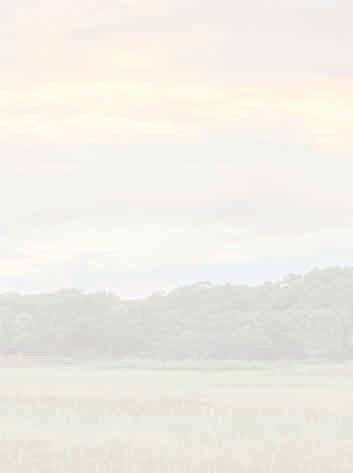
Real estate law is the firm’s primary area of focus, and we represent clients in the purchase, sale, use, and development of properties.
• Litigation (Property and HOA)
• Community Association Representation
• Business Formation Or Dissolution
• Leases, Contract Review
• Patents, Trademarks, Copyrights
• Estate Planning
• Mediation Services
Our qualified attorneys and friendly, knowledgeable support staff provide clients with outstanding service.
Call us – we’ll take it personally.
Kiawah/Freshfields Village 843.768.6600
Pleasant 843.856.4488
Personal Service
Mt.
buistbyars.com
Acquisitions 33 Anderson Studio of Architecture and Design 2,3 Anglin Smith Fine Art 122 Aqua Blue Pools 65 Architecture Plus 75 Bennett Hofford Construction 25 Bill Huey + Associates 157 Blue Haven Pools & Spas 160 Buck Lumber & Building Supply 62 Buffington Homes LP 1 Buist, Byars & Taylor, LLC 173 Charlotte Lucas Interior Design 162 Christopher Rose Architects, PA 32 Crest Contractors, LLC 72 Croghan’s Jewel Box 66 D. Stanley Dixon Architect 26 Dolphin Architects & Builders 7 Epic Development Group, LLC 8 Ferguson 124 FineMark National Bank & Trust 63 GDC Home 18 Gwynn’s of Mount Pleasant Back Cover Hood Hargett 170 Island Sport 68 Islands Mercantile 35 K&L Gates 161 Kiawah Island Golf Resort 131, 156 Kiawah Island Real Estate Front Inside Cover, 73, 163 Kingswood Custom Homes 17 Knight Residential Group 123 Le Creuset 125 Lexus 21 Lowcountry Dental Associates 64 M. Dumas & Sons 22 Maresca & Associates, Architects 23 McDonald Architects 164 Muhler 71 Novella Homes 12,13 R.M. Buck Builders, Inc. 27 Regions Private Wealth Management 158 Roper St. Francis Healthcare 160 RTW Charleston 159 Samuel Furr Architects 6 Shope Reno Wharton 15 SieMatic .................................... Back Inside Cover Southeastern Wildlife Exposition 171 The Steadman Agency, Inc. 9 Stein Renovation and Design Group 130 Tammy Connor Interior Design ....................................... 14 Thomas & Denzinger Architects ................................. 70 Thomas & Hutton ..................... 174 Three Oaks Contractors, Inc. .... 74 Timbers Resorts ........................ 4,5 Tyler A. Smyth Architect, LLC 176 Wayne Windham Architect 69 Wells Gallery 34 Womble Carlyle Sandridge & Rice, LLP ............................... 67
2017 LEGENDS MAGAZINE
Transforming Communities
for Future Generations

thomasandhutton.com Continuing a 70-year history, Thomas & Hutton is designing our communities for future generations. A multi-disciplinary firm, Thomas & Hutton continues to learn, improve, design, and implement processes and practices that grow healthy communities. We work collaboratively in designing solutions to the key challenges that affect everyone's quality of life.
Kiawah Island in the 1980s


Opened in May of 1976, the Kiawah Island Inn provided nearly three decades of exemplary service to tens of thousands of guests before it was retired in 2004 upon completion of The Sanctuary. The Inn boasted one hundred and fifty rooms, two swimming pools, the Sundancer Grill with poolside bar, the Topsider Lounge, and Jasmine Porch. Enjoy this glimpse back in time!

LEGENDS MAGAZINE 2017 NO 28 175
END NOTES
MARKETING PHOTOS OF THE INN FROM THE MID-80 s , COURTESY OF KIAWAH ISLAND GOLF RESORT


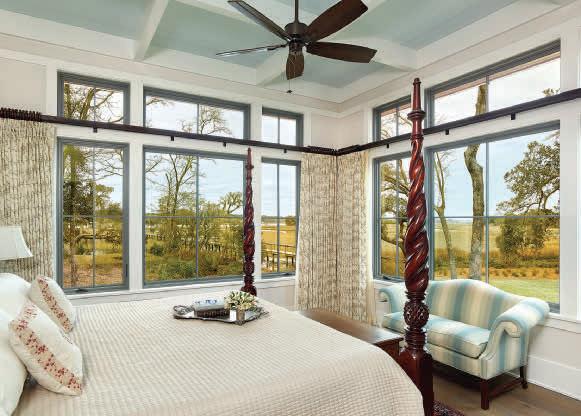

KIAWAH ISLAND WWW.TYLERASMYTH.COM 843 724 7787 CHARLESTON
Photo by Donnie Whitaker
Photo by Holger Obenaus
Photo by Donnie Whitaker

SieMatic Charleston 444 King Street Tel: 843.724.5838 www.siematic-charleston.com CLASSIC IN A NEW COMPOSITION Kitchen Interior Design












 Photo by: Newport653 Photography
Photo by: Newport653 Photography




































































 JONATHAN SANCHEZ | WRITER
CHRISTINA RAE BUTLER | PROFESSOR
PETER DEL TREDICI | PROFESSOR
PETER FRANK EDWARDS | PHOTOGRAPHER
JONATHAN SANCHEZ | WRITER
CHRISTINA RAE BUTLER | PROFESSOR
PETER DEL TREDICI | PROFESSOR
PETER FRANK EDWARDS | PHOTOGRAPHER


























 From STAMFORD, CONNECTICUT JEAN & STUART SERENBETZ Property Owners
From STAMFORD, CONNECTICUT JEAN & STUART SERENBETZ Property Owners














 WRITTEN by JONATHAN SANCHEZ
WRITTEN by JONATHAN SANCHEZ

 PHOTOGRAPHY by OLIVIA RAE JAMES
PHOTOGRAPHY by OLIVIA RAE JAMES








 WRITTEN by PETER DEL TREDICI the
WRITTEN by PETER DEL TREDICI the




















































































 ILLUSTRATIONS by BECCA BARNET
ILLUSTRATIONS by BECCA BARNET











 WRITTEN by TOM COYNE
WRITTEN by TOM COYNE
 A WINTER SCENE WITH TWO GENTLEMEN PLAYING COLF. HENDRICK AVERCAMP (DUTCH, 1585–1634)
— P. G. WODEHOUSE
A WINTER SCENE WITH TWO GENTLEMEN PLAYING COLF. HENDRICK AVERCAMP (DUTCH, 1585–1634)
— P. G. WODEHOUSE








 WRITTEN by CHRISTINA RAE BUTLER
CHARLESTON AND THE SEA ISLANDS
WRITTEN by CHRISTINA RAE BUTLER
CHARLESTON AND THE SEA ISLANDS






























 PHOTOGRAPHY by OLIVIA RAE JAMES
PHOTOGRAPHY by OLIVIA RAE JAMES






























































































































